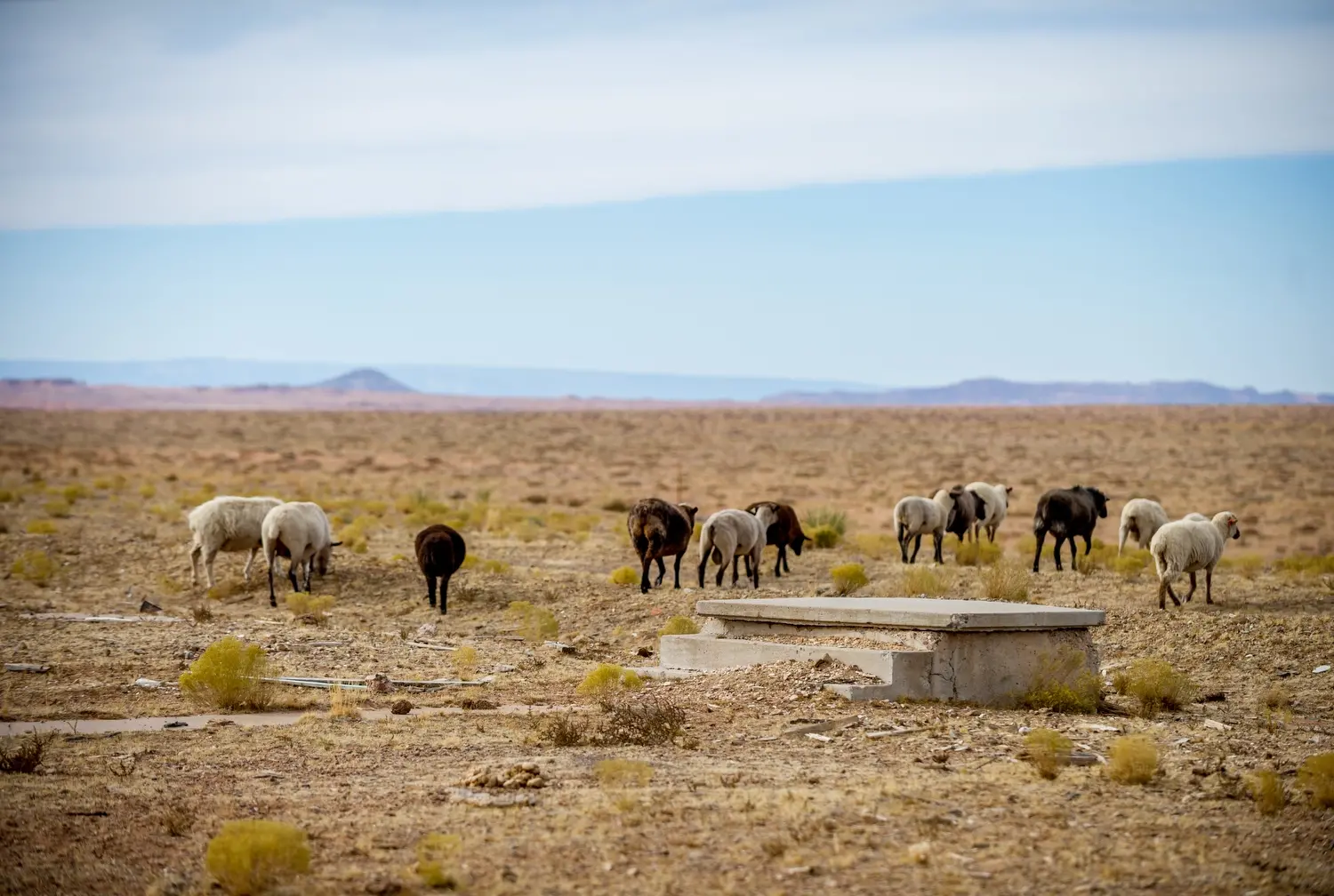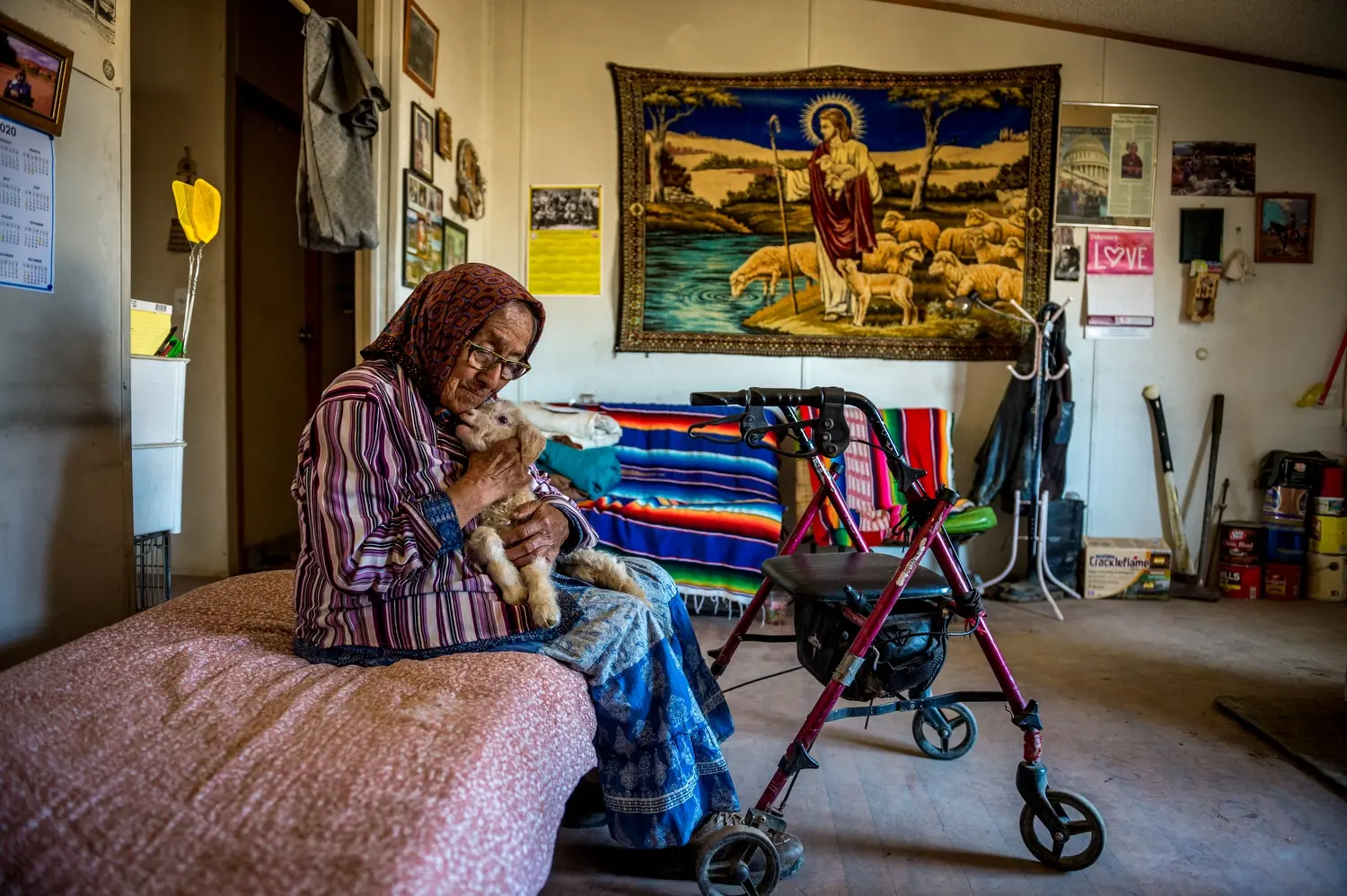
Helen Nez was just a child when men from the mining companies asked her to carry around a small device that detects uranium while she was herding sheep near her home in Blue Gap, Ariz. When the device went off, she would put a stake in the ground at that location. The mining companies used the local Navajo people to detect the location of the uranium. All those stakes in the ground became the Claim 28 uranium mine site. She grew up a half mile from the mine.
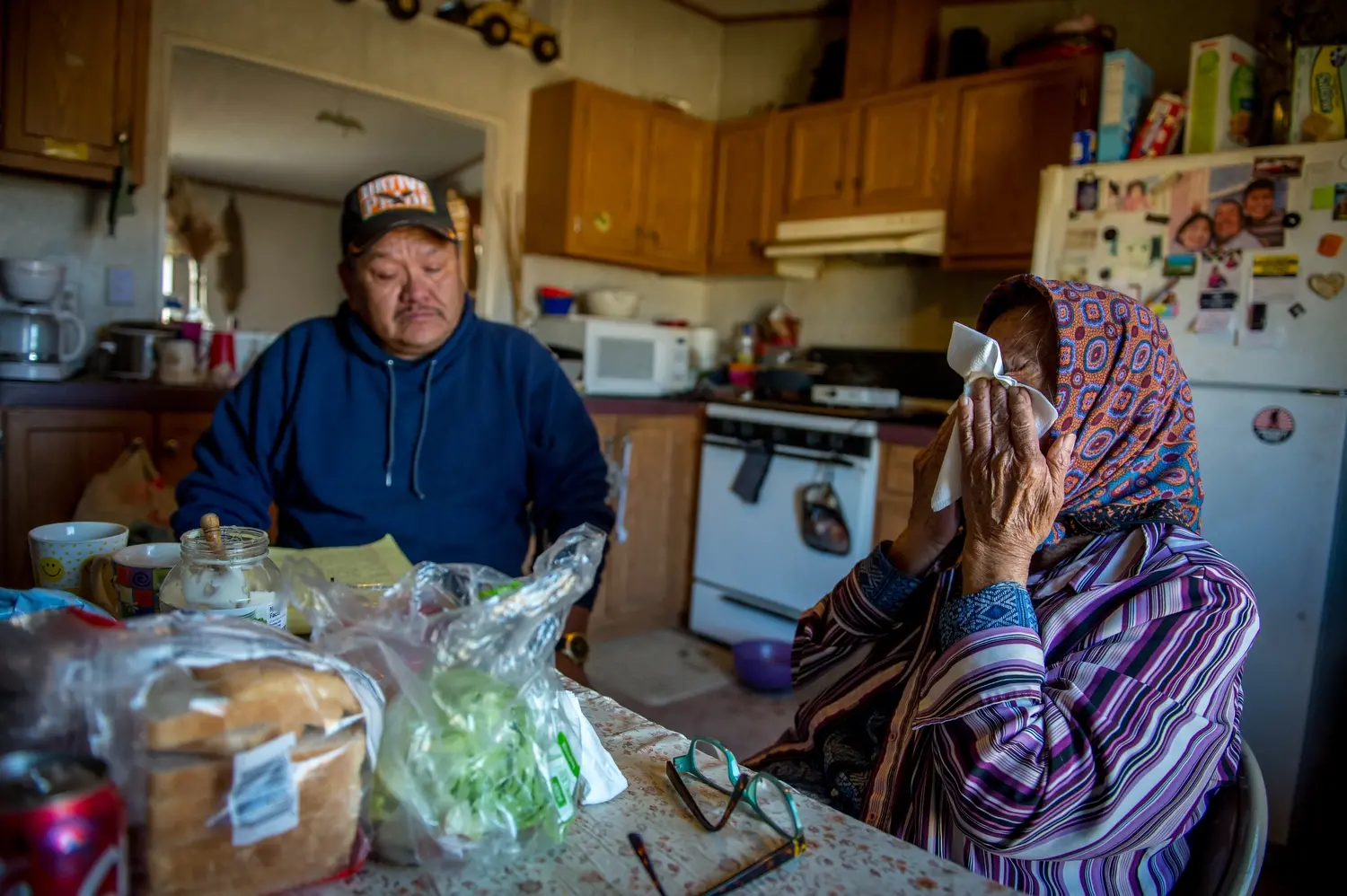
Nez and Aaron Yazzie, Blue Gap (Tachee) Chapter president, sat in her kitchen and discussed the effects of the uranium mine in their community.
“We call it the monster,” Yazzie said. “There’s a monster sitting up on the hill and there’s other monsters sitting behind her. How do we get rid of it? It has affected people down here.”
He added: “As long as you have life in the vicinity, you have water there; if you have water there, you have plants there. If you have animals there, that means there’s vegetation for them, food. So, therefore, the water is going to be consumed by the animals and the vegetation is going to be consumed by the animals and, eventually, the people are going to be consuming the sheep. So, in that chain, where do you find the contamination? If there is contamination in the sheep, there is contamination in us as well.”
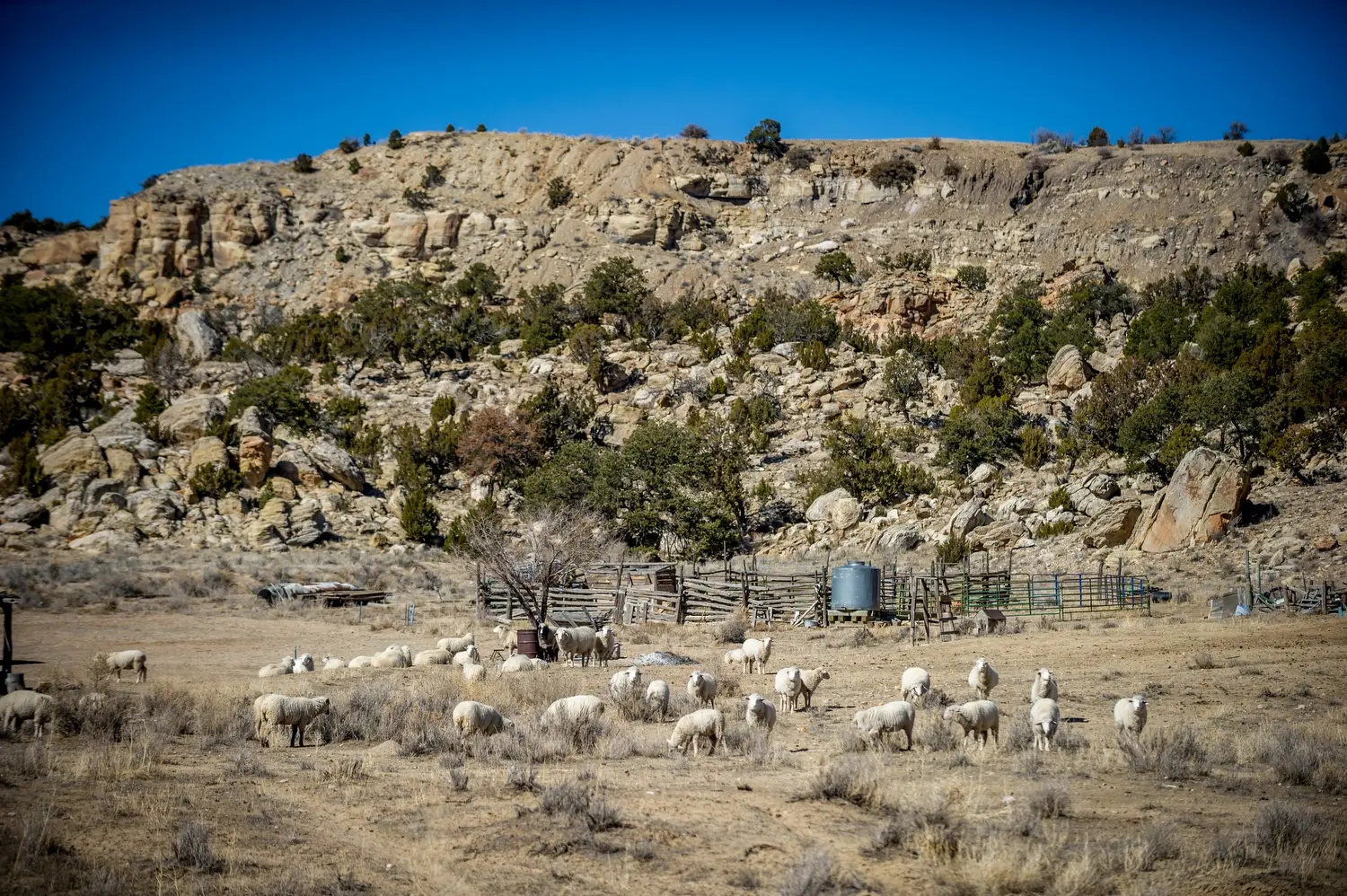
Due to her declining health, Nez is concerned about what is to come. “I’m concerned about how this whole thing that I’m talking about is going, if it is going to continue or not. Or if that happens, then it might just stop there to where my mission is going to end with it.”
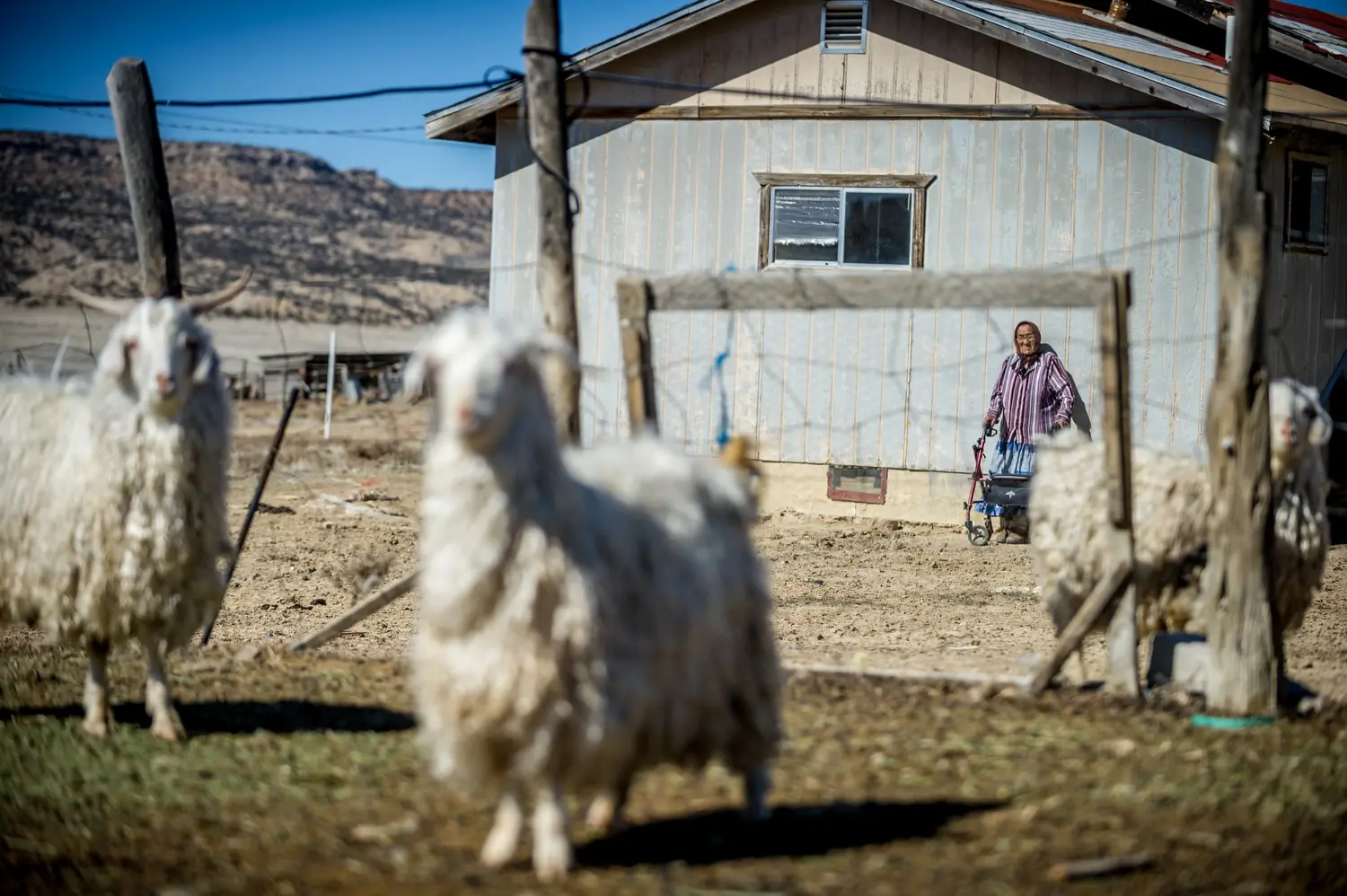
Nez eventually married a miner and started having kids. There was a school about a quarter mile from the mine. “When they did the blasting, it’s almost like volcanic dust coming down,” she said. “If you had a cup sitting there on the desk, it would fill up with dust after a day. It also contaminated the food. At the time, there were no refrigerators, so we would store our food outside or dug inside the ground. That’s how we would keep it cool. There would be uranium dust all around the house. At the time, no one let us know that this was dangerous stuff. They just came and did their thing. We didn’t even know what it was.”
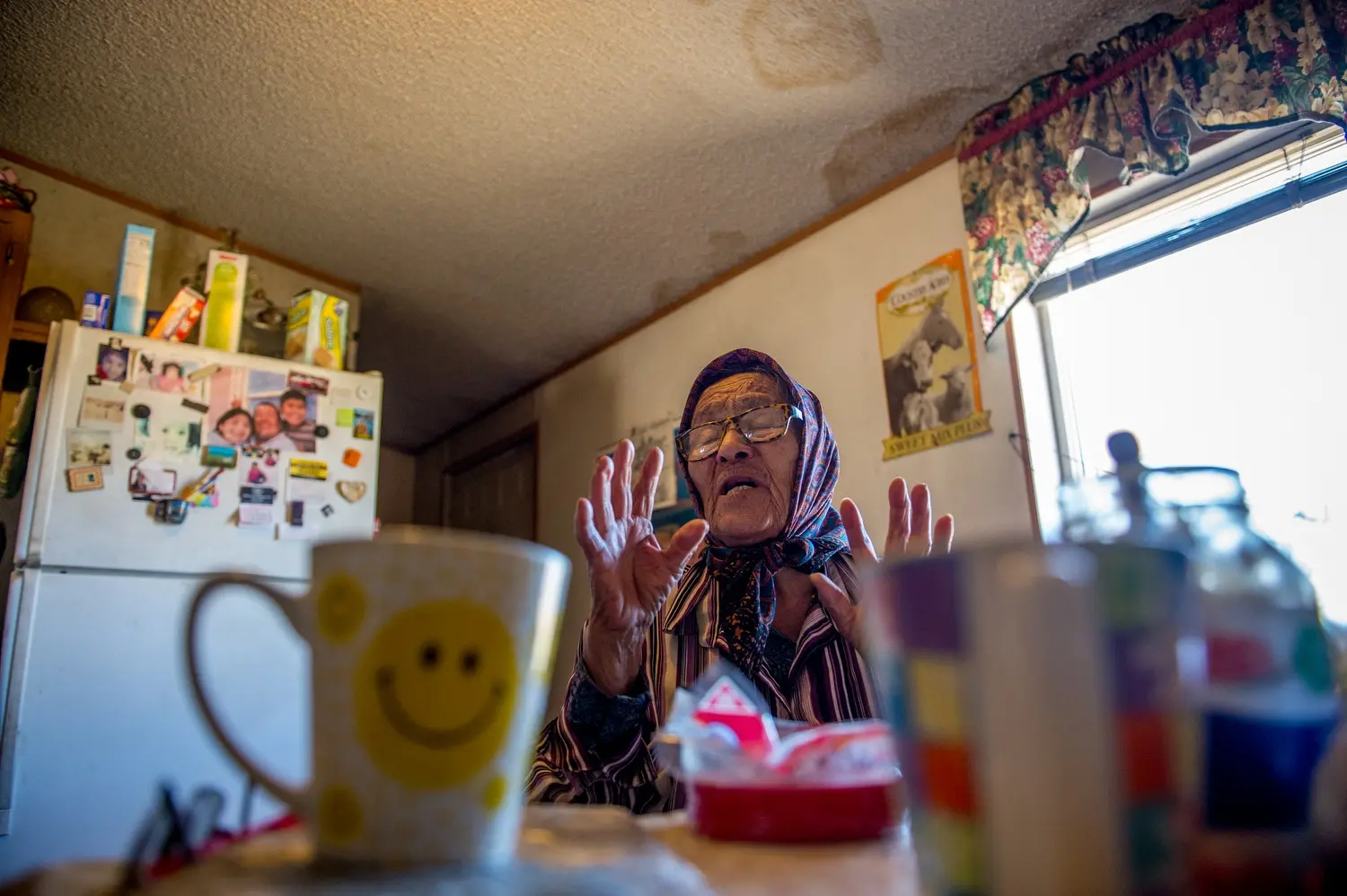
Nez’s daughter was born one year after the mine opened, the first of her 11 children. All her children had issues with their lungs and their kidneys. Eight died.
The children she lost had the same problems. They were bloating, they had cloudy eyes and they were coughing up blood. Some of them were unable to walk.
She would take her children to the local hospital but they never received a diagnosis. Instead, she said, the doctors just blamed her: Maybe it’s you having children out of incest? Something's wrong with your husband? Maybe there’s something wrong with you?
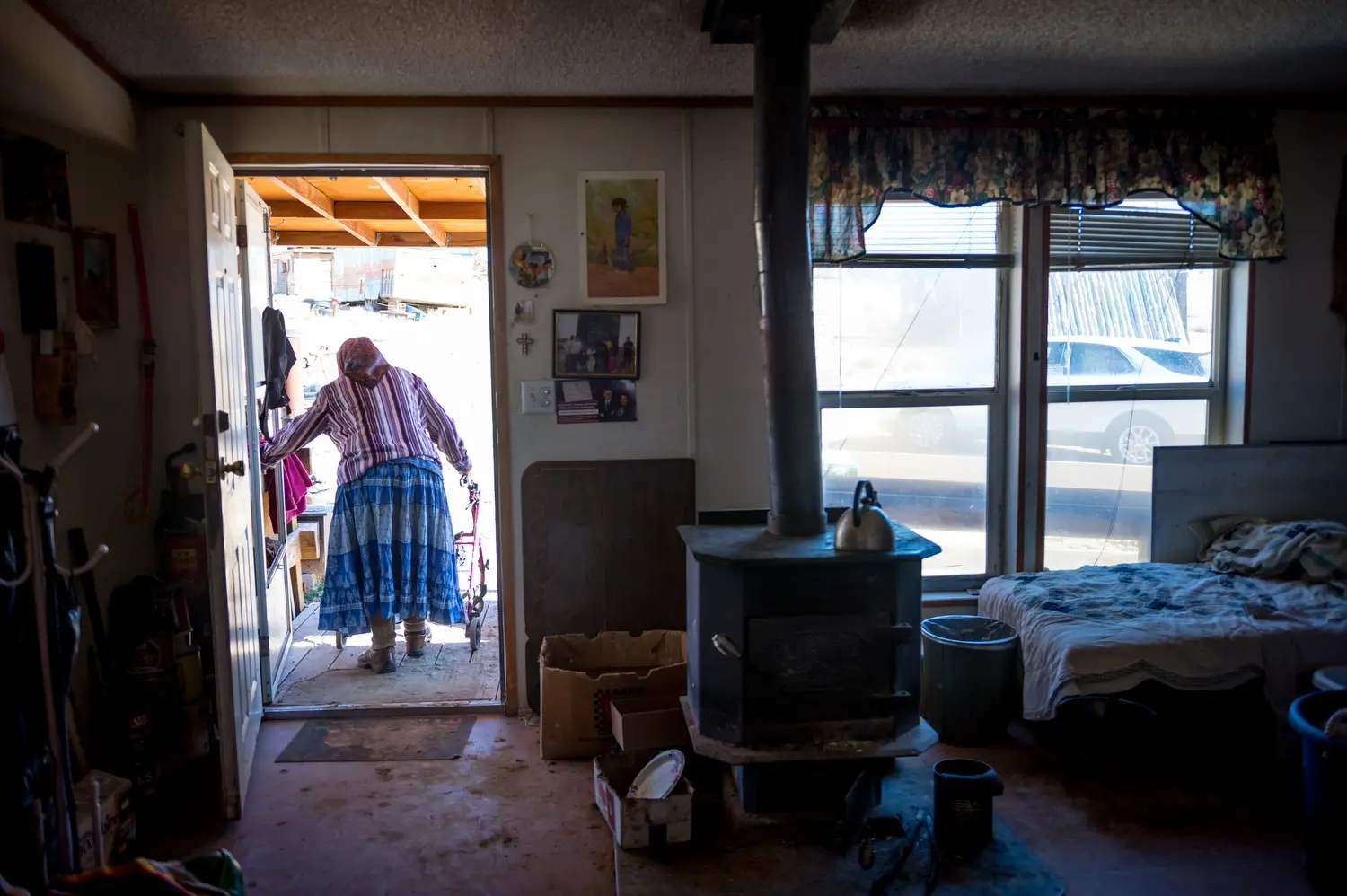
Finally, she took her youngest child to the hospital in Albuquerque, N.M., and the doctors asked her where she lived and what their environment was like. “Well, we’re in the mining town,” she told them. The doctors’ response: “Oh, OK, that’s what this is.”
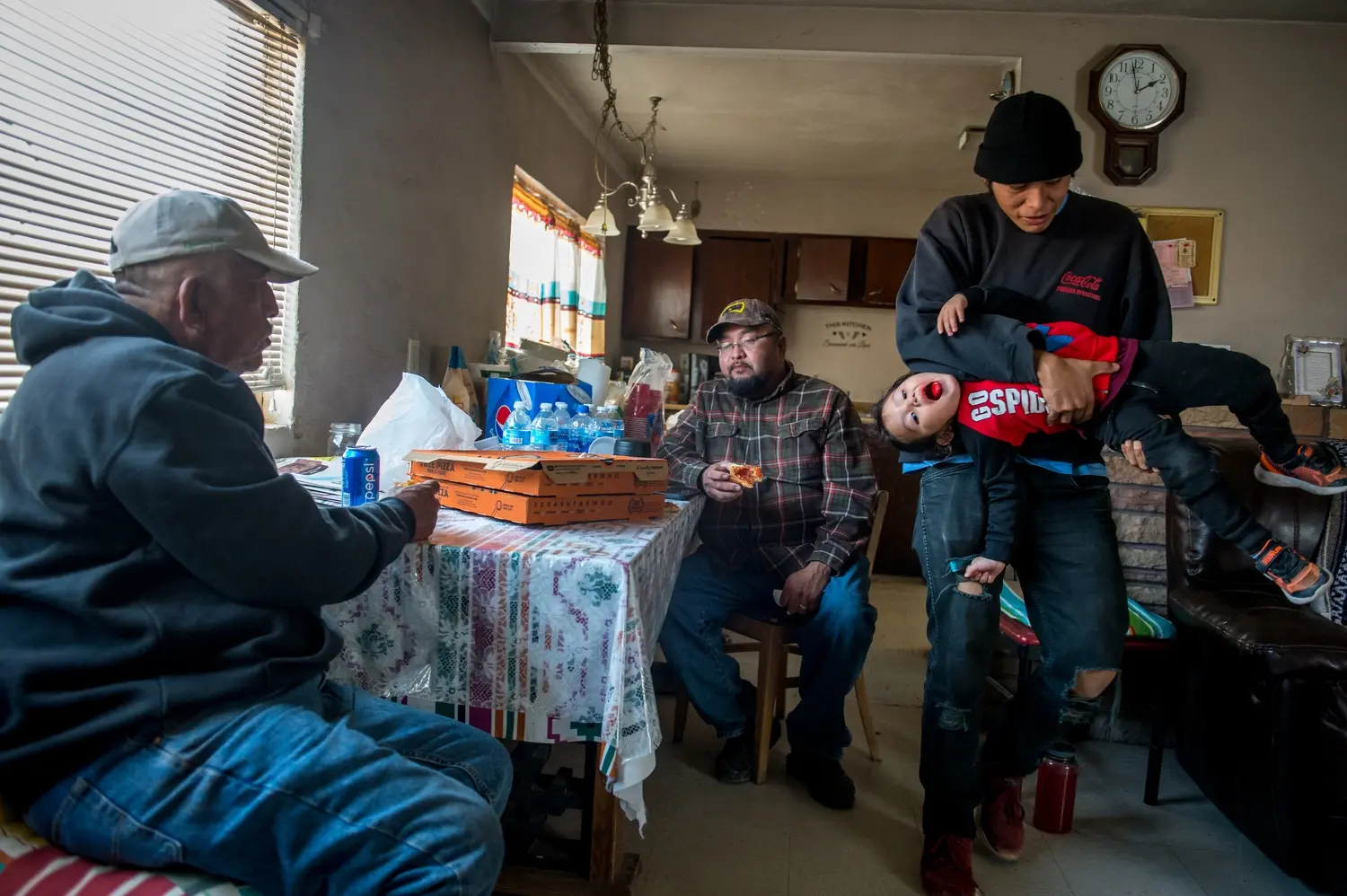
When Brandon Canyon’s mother had cancer, she had to travel from the reservation to Tucson, Ariz., for treatment, which was a hardship for their family. Canyon said, “Here on the reservation we have uranium mining and are downwind from the nuclear testing back in the '50s. I’ve been a part of some [cancer] studies when I was going to junior college, and there’s a lot of cases here on the res that are undocumented. We don’t really know the scope of the cancer going around. A lot of Native Americans opt not to have care because they can’t afford it. They don’t know how to ask for it and they believe, through their traditional ways, that they can be healed. By that time it’s too late and they succumb to the cancer."
Canyon is pleased that the Specialty Care Center in nearby Tuba City is now treating cancer patients. “Cancer care here is still lacking. They’re not up there yet, but they’re trying. The big thing is that it’s here. Two years ago there was nothing.”
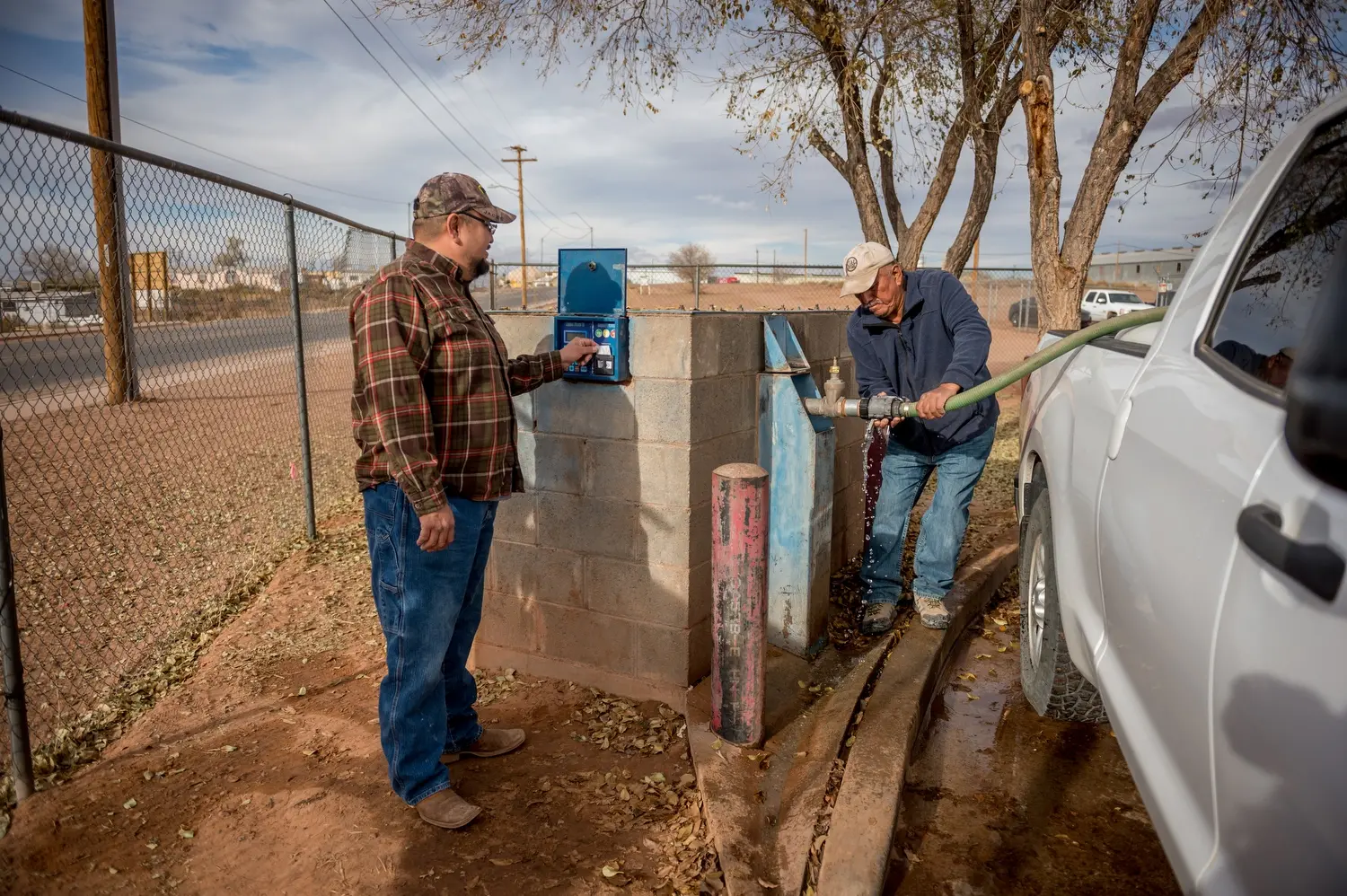

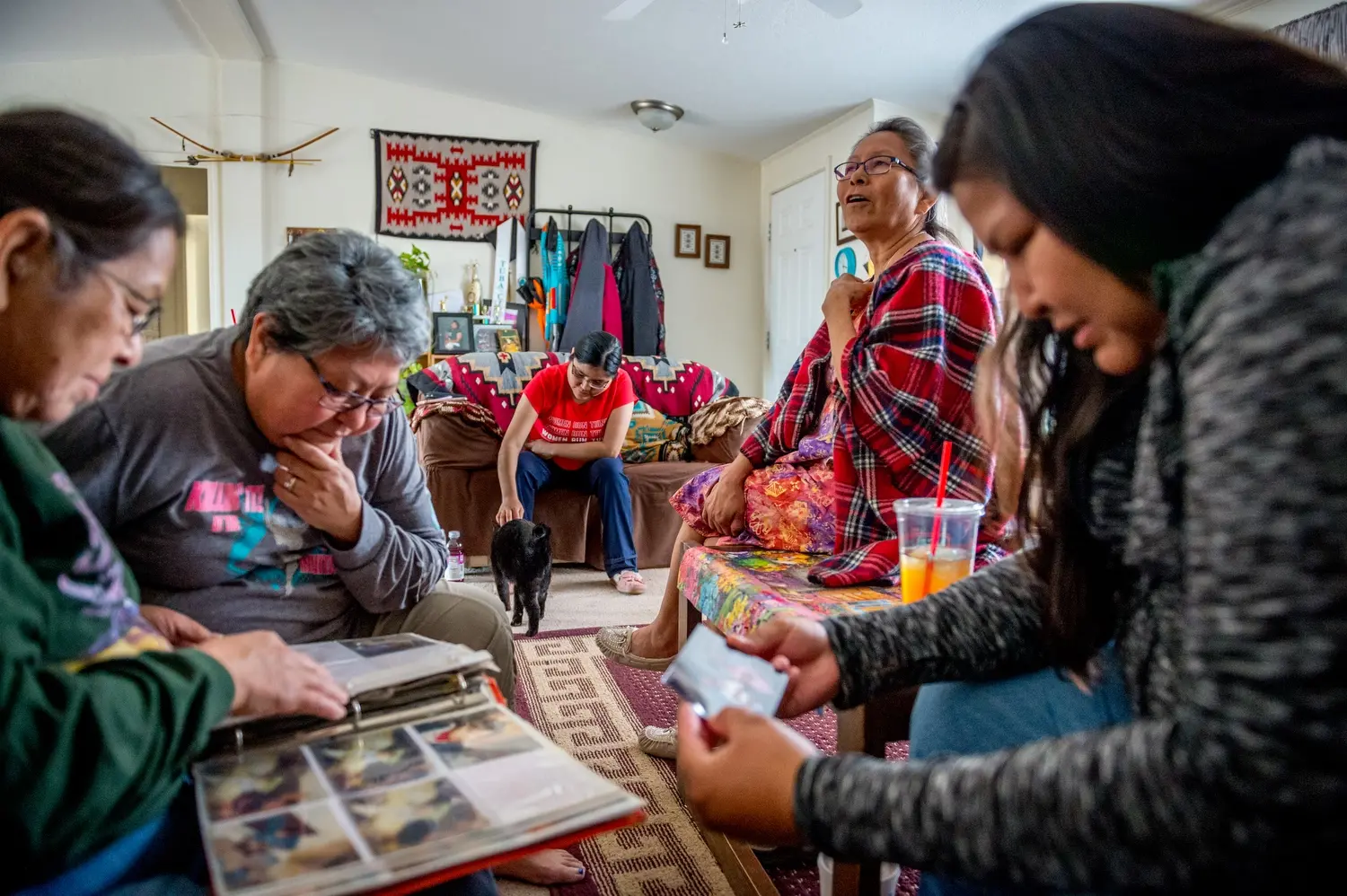
Carol Talker and her sisters grew up near Cameron in a house with no electricity or running water. Their father, Tommy Talker, worked in the uranium mines. When he returned home on the weekend or every two weeks, he would walk into the house covered with yellow uranium dust. Water was always scarce, so after her mother washed her dad’s clothes in a tub, Carol and her siblings would bathe in the very same water.
“When mom washed his clothes … 'Hey, there's some water, we can shower, take a little bath and not waste it.’ That's what we did. We were exposed to uranium in a lot of ways,” Carol said.
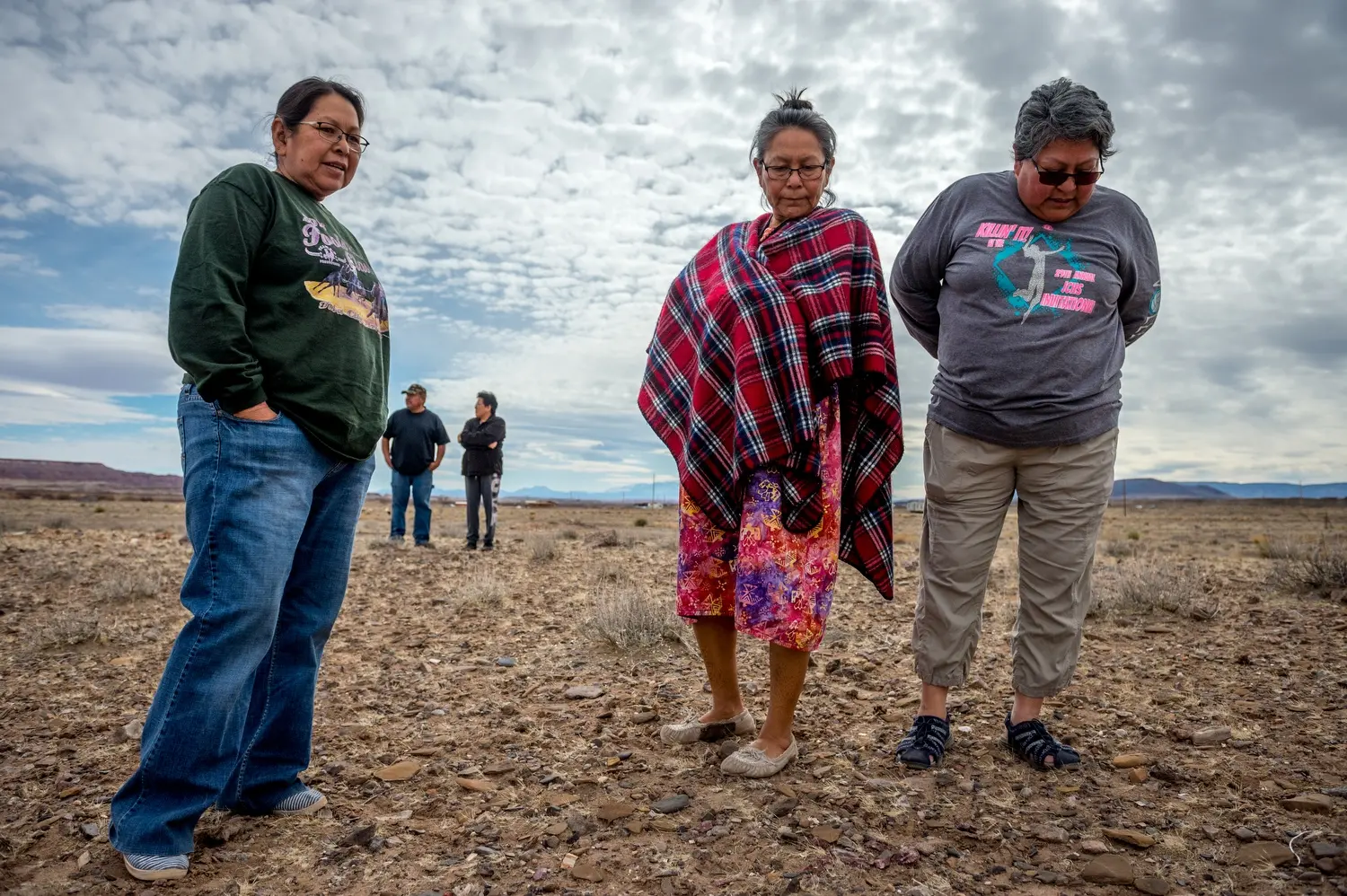
Tommy Talker developed lung cancer and is in the process of filing a claim filing through the Radiation Exposure Compensation Act.
“He wasn't protected, and I don’t know if they knew the dangers at the time. I have no idea. But also growing up here we have a lot of uranium on the Colorado plateau. There was a water well, maybe a mile and half over here by the junction,” said Leona Begishie. “We went there and we got our water from there. Livestock went there. We swam in it, it was mostly muddy, but we swam in it and drank it, used it for cooking, cleaning, everything. I remember that. And from what I understand that well was kept because there was uranium in it. I had heard that and I don't know who did the testing on it or anything, but the well’s not there anymore. But we did that all when we were kids, so maybe our exposure was kind of twofold with dad and just being here in this area.”
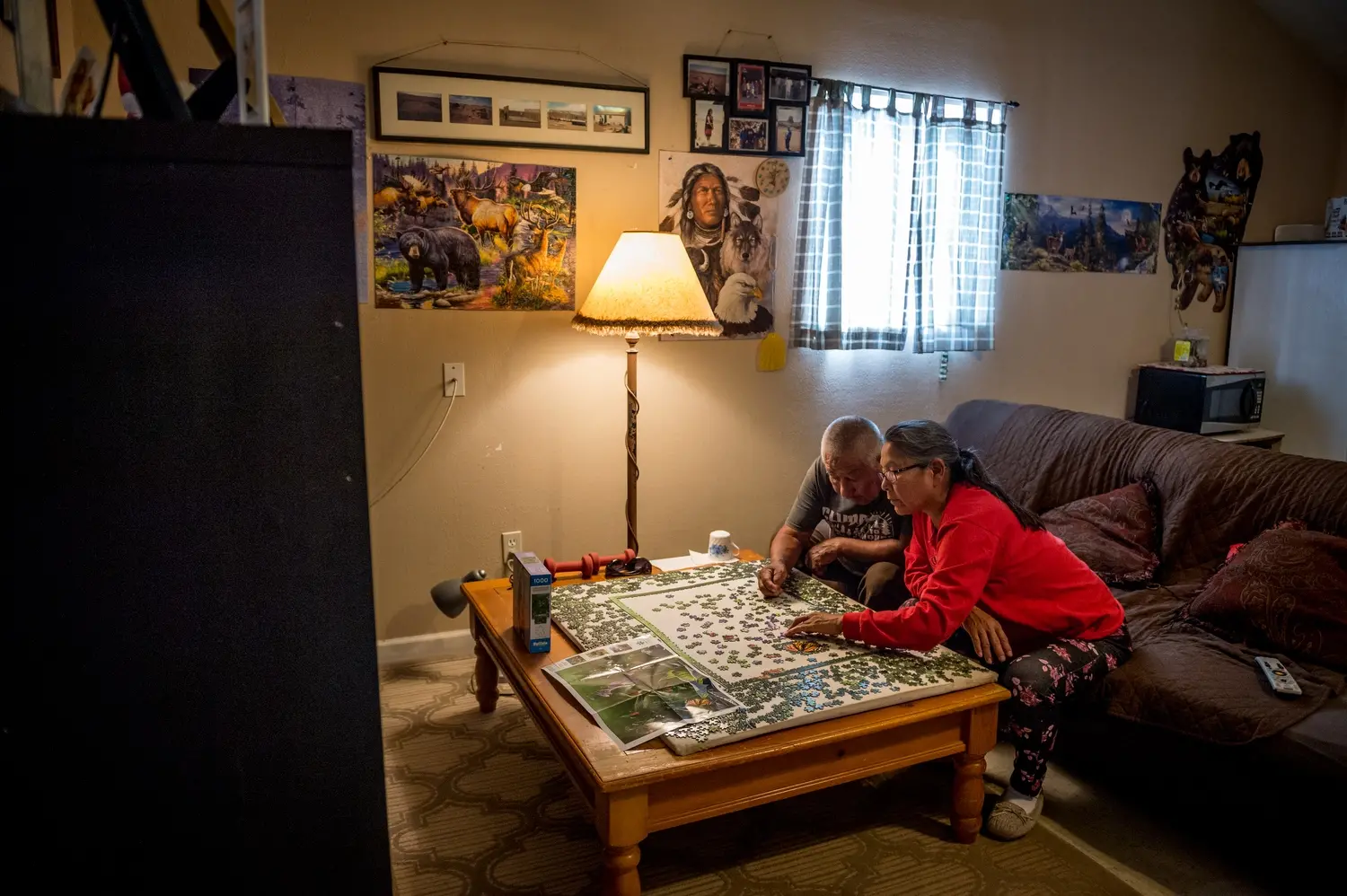
A few years ago, Carol Talker’s sister Linda was diagnosed with thyroid cancer caused by uranium exposure.
“She had surgery,” said Carol Talker. “Taking out her thyroid, both sides and then some tissues all the way up to her ear. And also she can't hear. She's losing her hearing from all of that. She was affected in that way. After she was diagnosed, I went back and I got checked for that every two to three years.”
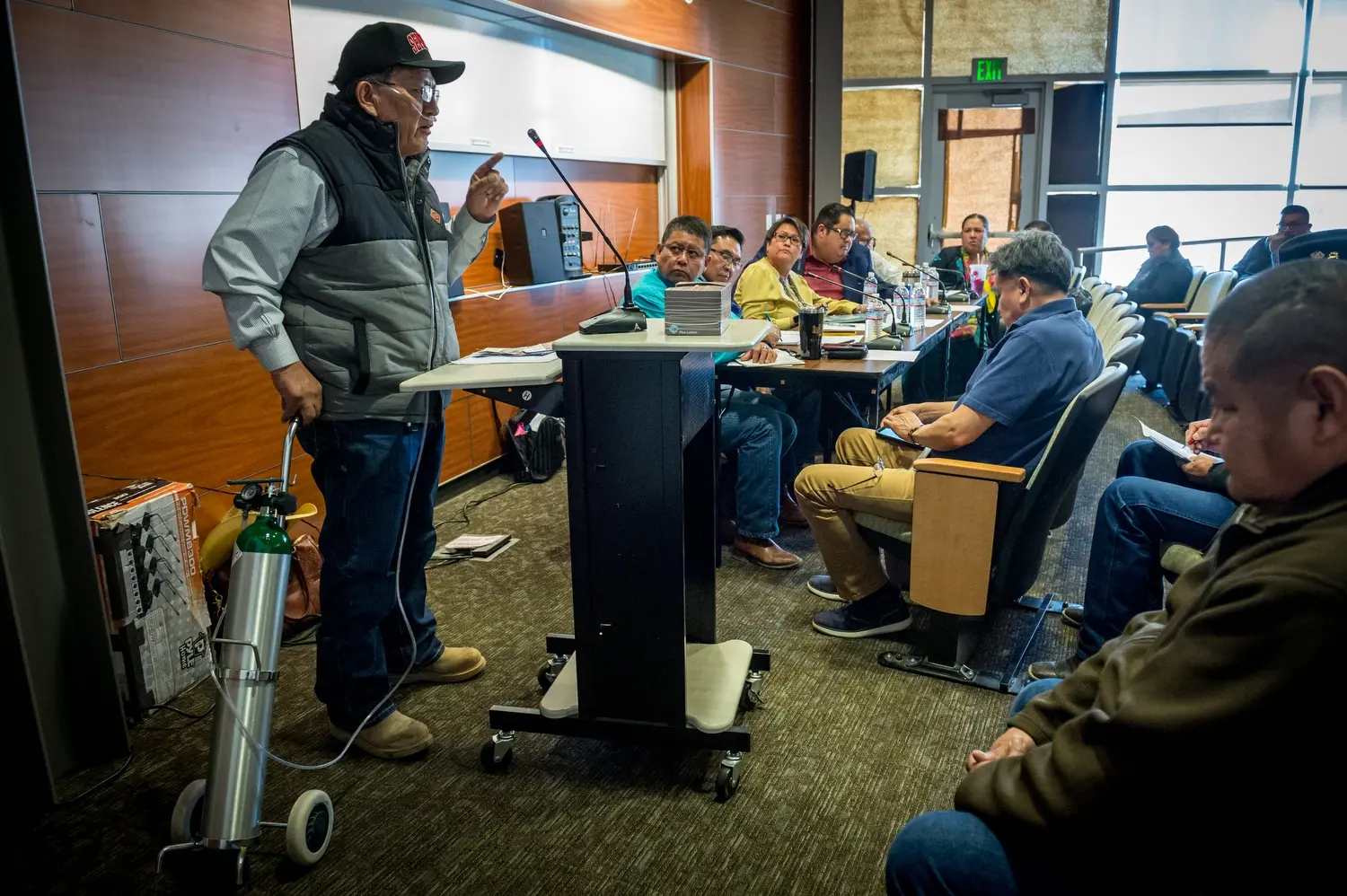
For eight years, Leslie Begay worked in a uranium mine operated by Kerr-McGee, a subsidiary of Anadarko Petroleum with an infamous environmental record.
“Working in the mine was a very hazardous job, and we worked underground at the lowest levels, where the richest uranium was, the uranium with the most value. They never told us that this thing was dangerous. We did drink water down there where it used to come out of the side of the walls and stuff like that. We used to put a cup right there and drink out of it,” said Begay.
“I don't care if you're going to be wearing a space suit, something will still get on you because it's a very confined space where you worked and you can't breathe,” said Begay. “You blast and you lay in it. You use shovels, hands, you drill, you use air compressor. It makes loud noise. I don't have one ear to use. It's fundamentally gone and I have trouble walking. I have trouble breathing. … Now I am facing this lung disease, which is pertaining from my work for many years. Many people are dying now from this. It's a very silent killer and we have known this and we are dealing with a big disease, different cancers on different parts of the reservation."
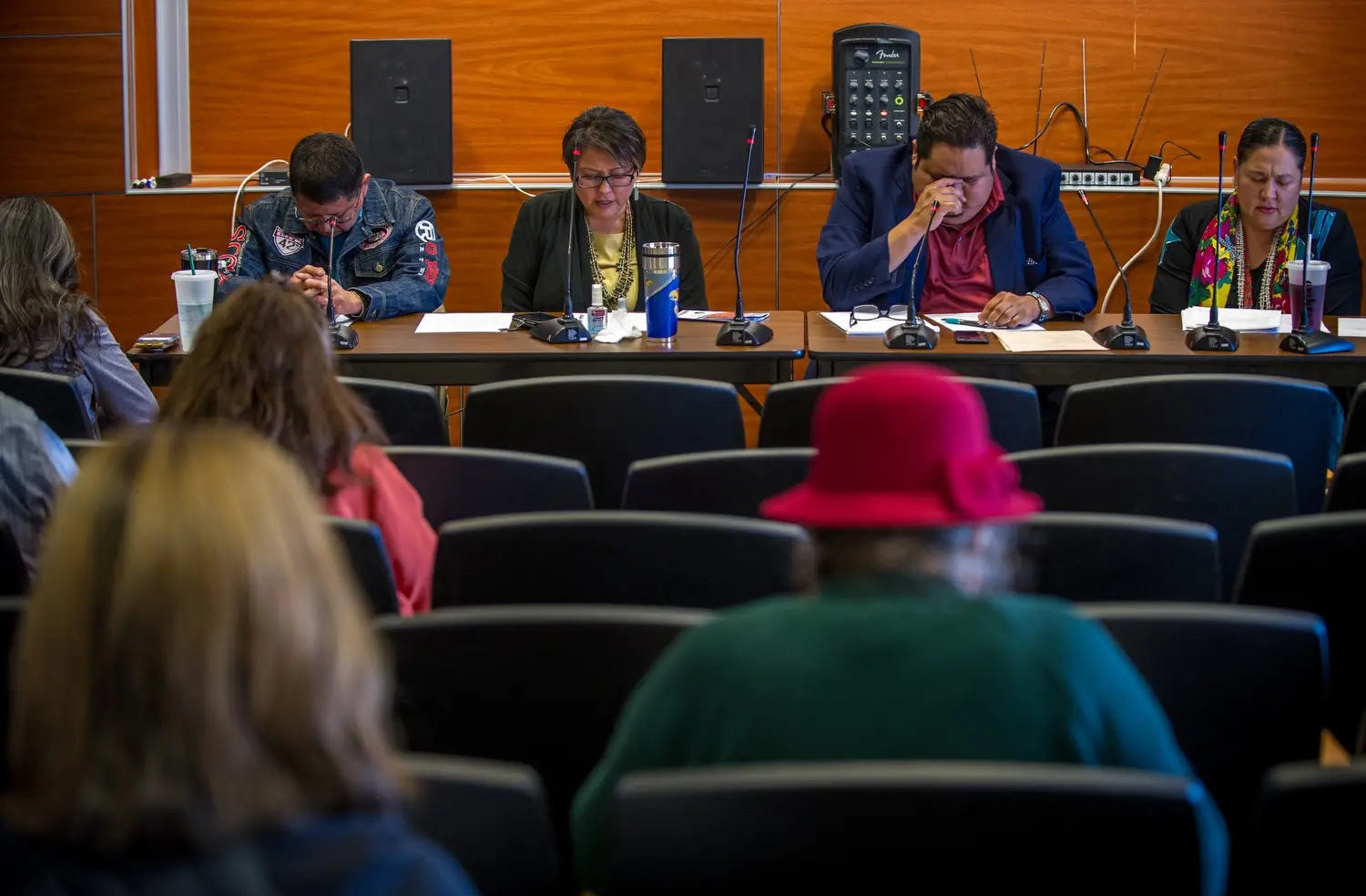
“My reservation is plagued with disease and cancers. The reservation of the Navajo tribe has over 500 mines, and it's not fully under any kind of recovery or it’s still exposed, and we're exposed to a lot of this radiation that we're dealing with now. My condition is deteriorating very much.”
When Begay leaves the reservation for treatment, he has to carry about 10 canisters of oxygen to last him the whole trip.
The medication Begay takes to prolong his life costs $96,000 for 150 pills.
“I go to local service unit, which is Fort Defiance Indian Hospital. I go there and with my doctor's recommendation, I go to Presbyterian Hospital in Albuquerque to see the specialist, the pulmonologist, the cardiologist. Their recommendation is to get my X-rays, CT scan, lab work. I have to come back to Fort Defiance to get these things done and then I have to take it back to Albuquerque to give it to my doctor. Making these many trips, I don't think that should be part of it. I think I should be seen at one place instead of making these long trips, two hours, three hours. That's uncalled for."
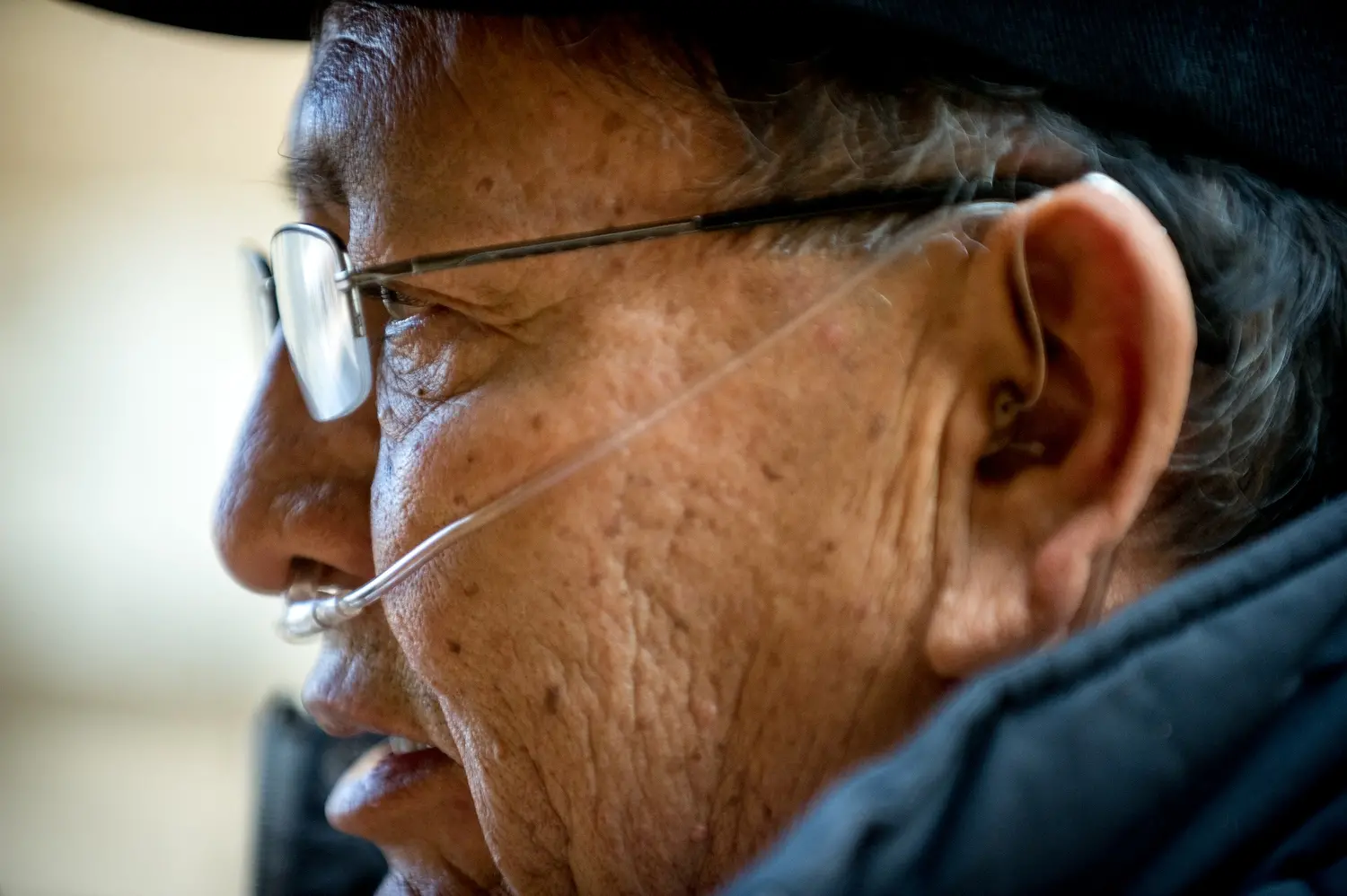
“This is so frustrating. I call it that weird, one big sleeping giant — the government — needs to see this. See the level of where we were at, please. This is very frustrating moments of my life that I see my people dying this way, this kind of condition. We don't deserve this. The government should see us, that we're special people."
“The government is responsible for all these issues that we're dealing with. We're the people that created national security, making bombs, making missile warheads,” Begay said.
“We are the Navajos, my people. We are the producers of national security. We're the freedom makers. My code-talkers and our language made America freedom with their voices. Many victories in the Pacific War. We also produced the uranium, making bombs, making warheads to make this national security to make American freedom."
“We pledge to allegiance, but we have no justice at all with the Navajo people of what we're dealing with now, with the freedom that what we have created. And I hope the government will someday see this, that we are a people, that we are a creator of freedom, national security."
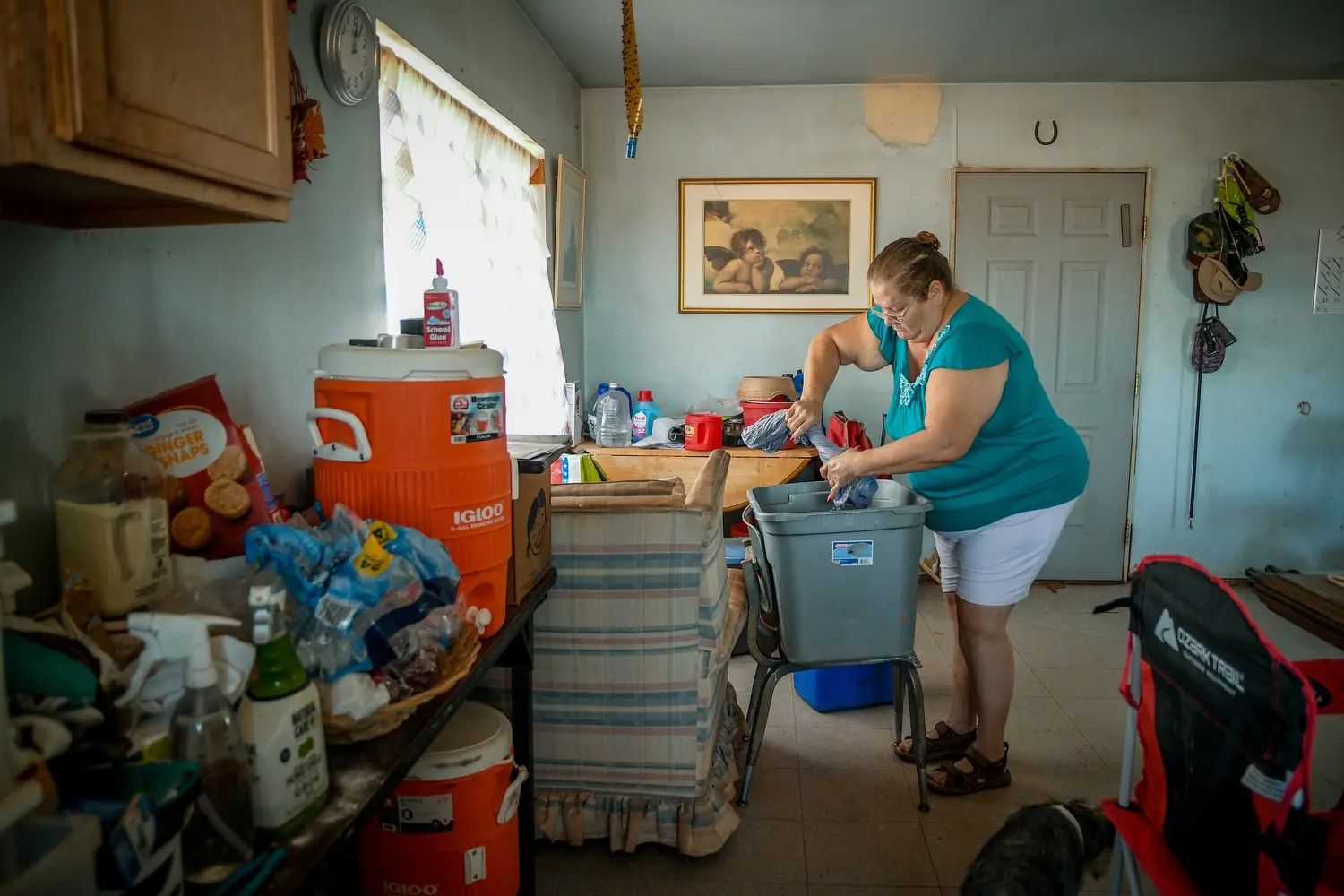
Rolanda Tohannie and her late husband, Larry, raised their family near an abandoned mine in Box Canyon, Ariz., keeping sheep and breaking wild horses for a living.
She said the uranium-contaminated well water near her house tastes sweet and makes her coffee taste better.
But the well was tested by the Centers for Disease Control and Prevention, in coordination with the Navajo Nation Environmental Protection Agency public water systems supervision program, who told local residents that it was contaminated by uranium, arsenic and other heavy metals and was not safe to drink.
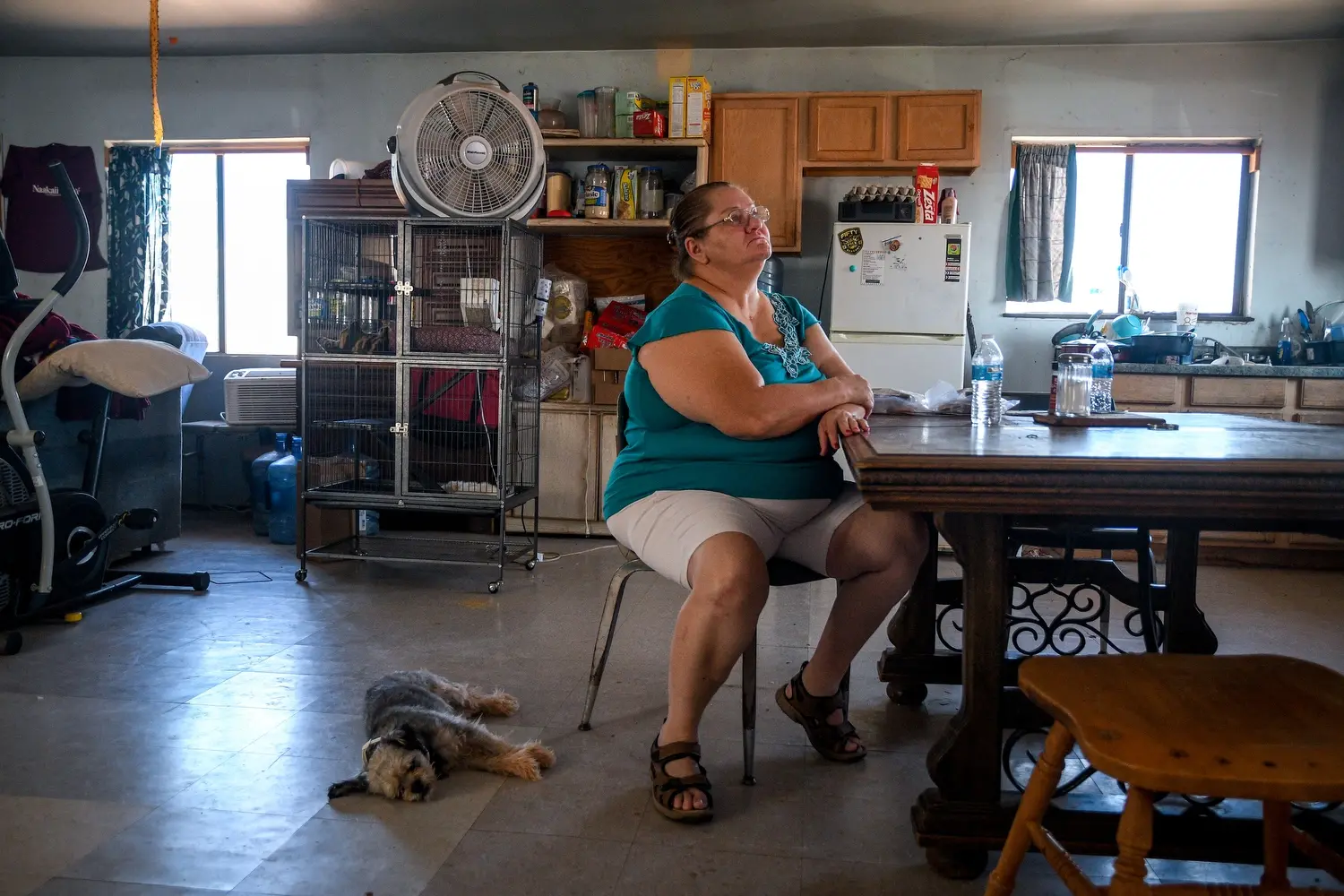
Rolanda, whose mouth is pulled to the side after a botched cancer surgery, said that cancer stole her smile. “I used to have a beautiful smile, but now I will never smile again.”
Health care
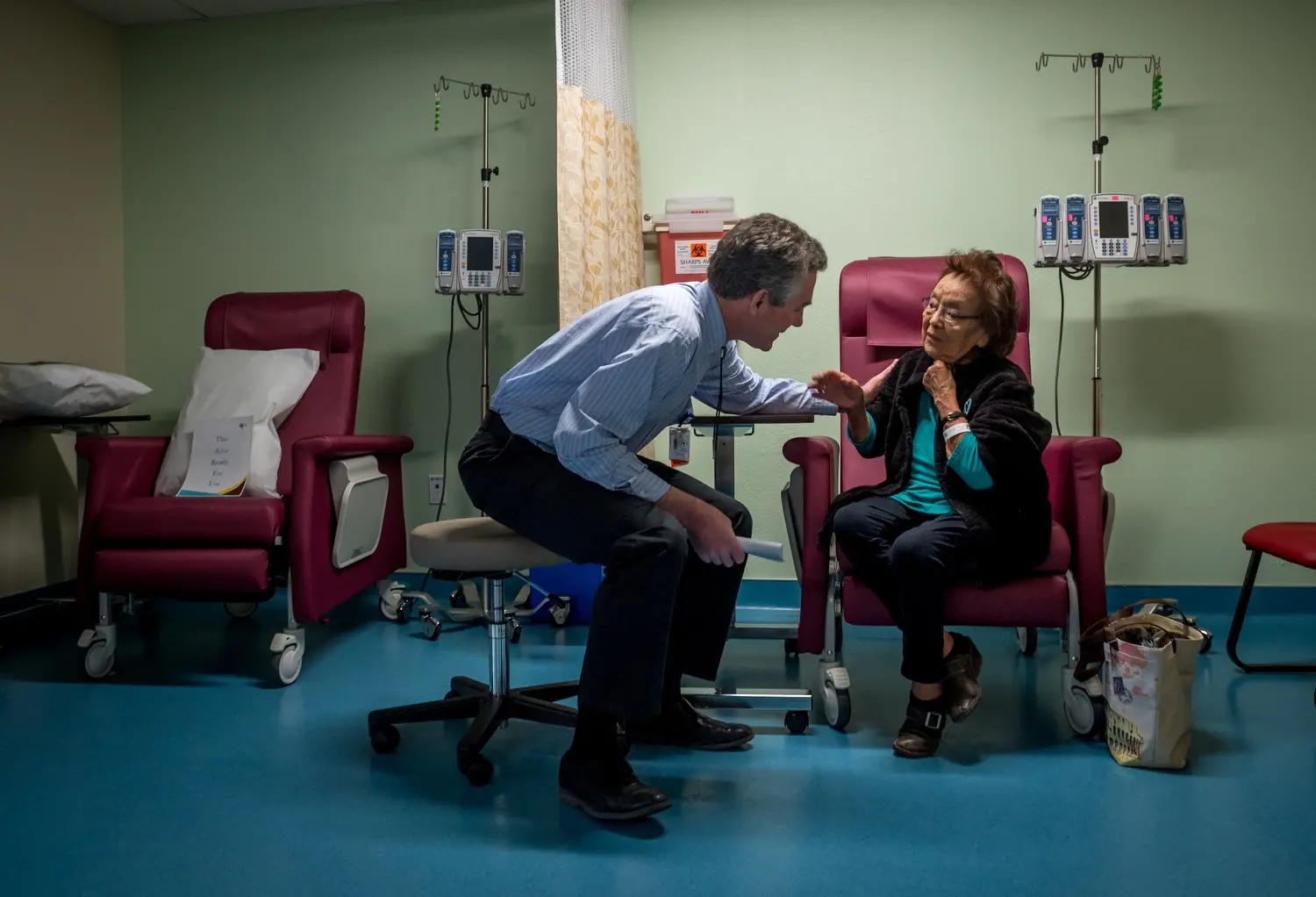
Dr. Frank Dalichow worked as a primary care physician at the Tuba City Regional Health Care Corporation for over a decade before practicing hematology and oncology at the hospital’s new Specialty Care Center. He is the only full-time oncologist working on a Native American reservation in the United States.
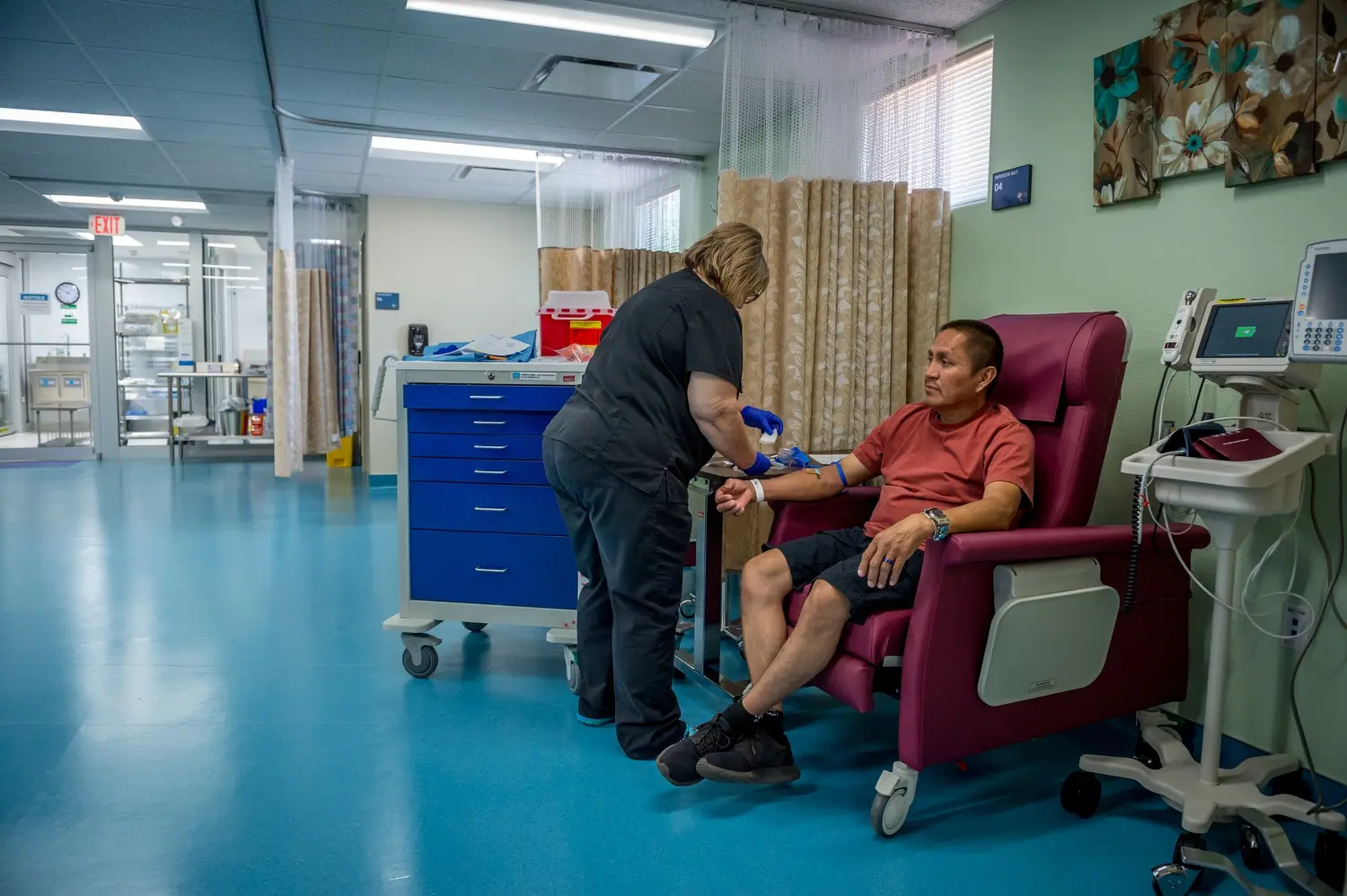
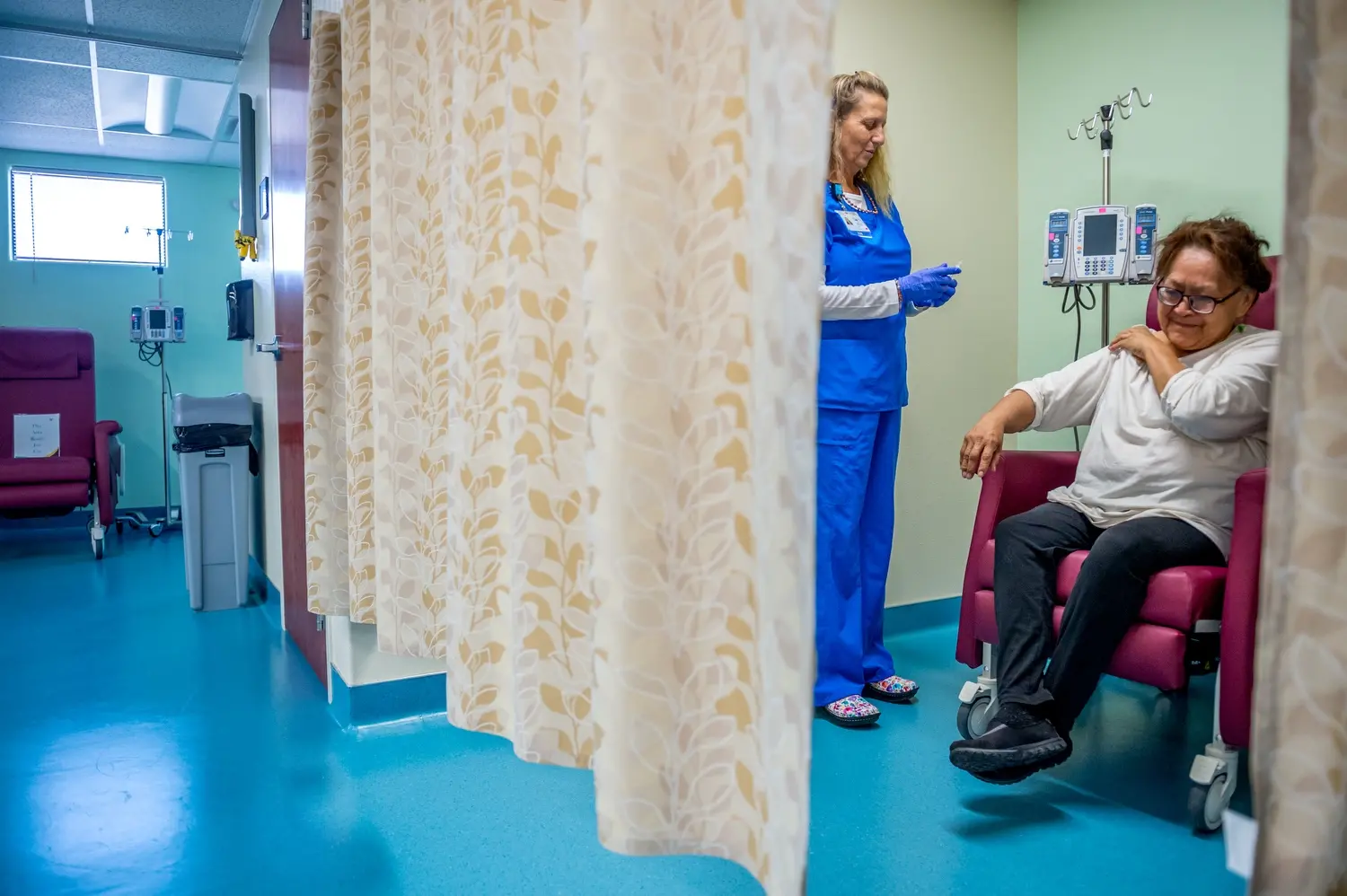
Victims’ advocacy
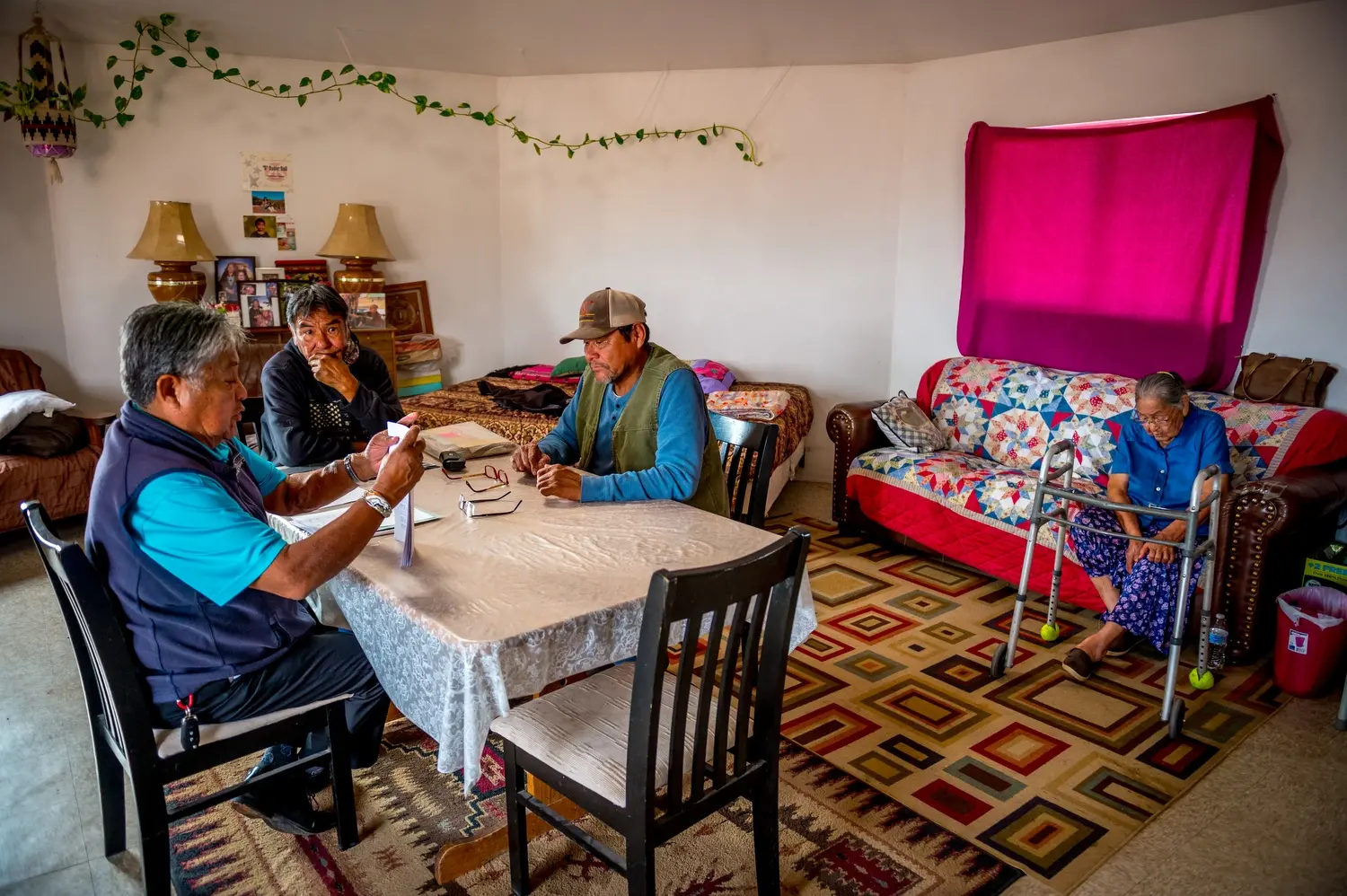
Phil Harrison, a consultant with the Navajo Uranium Radiation Victims Committee, and Bobby Robbins of Giving Home Health Care (a service that provides care for people who developed illnesses as a result of employment in the nuclear weapons or uranium industry) assist Paul Denetdeal, a former uranium miner with colon cancer, in filing a claim through the Radiation Exposure Compensation Act.
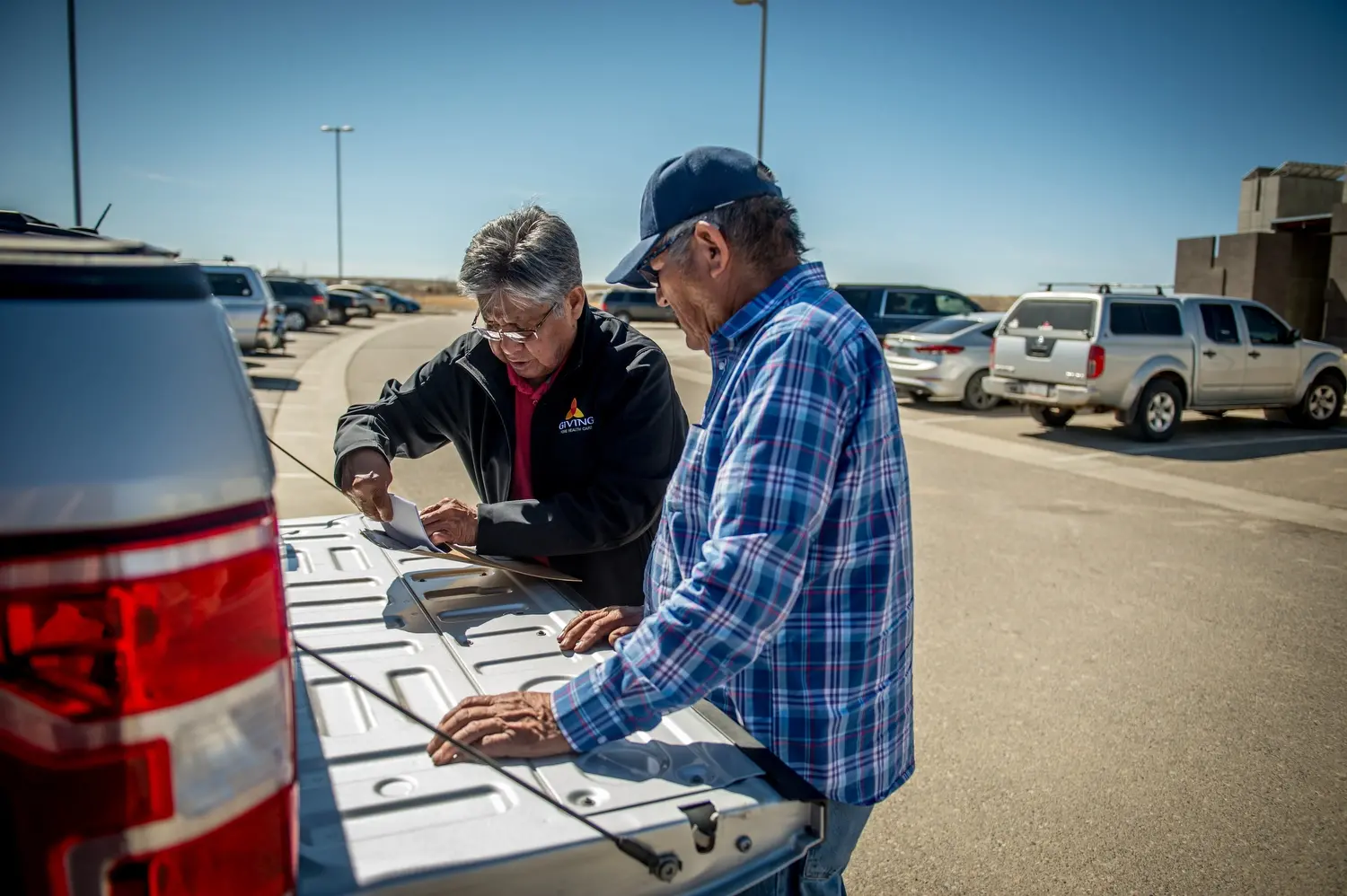
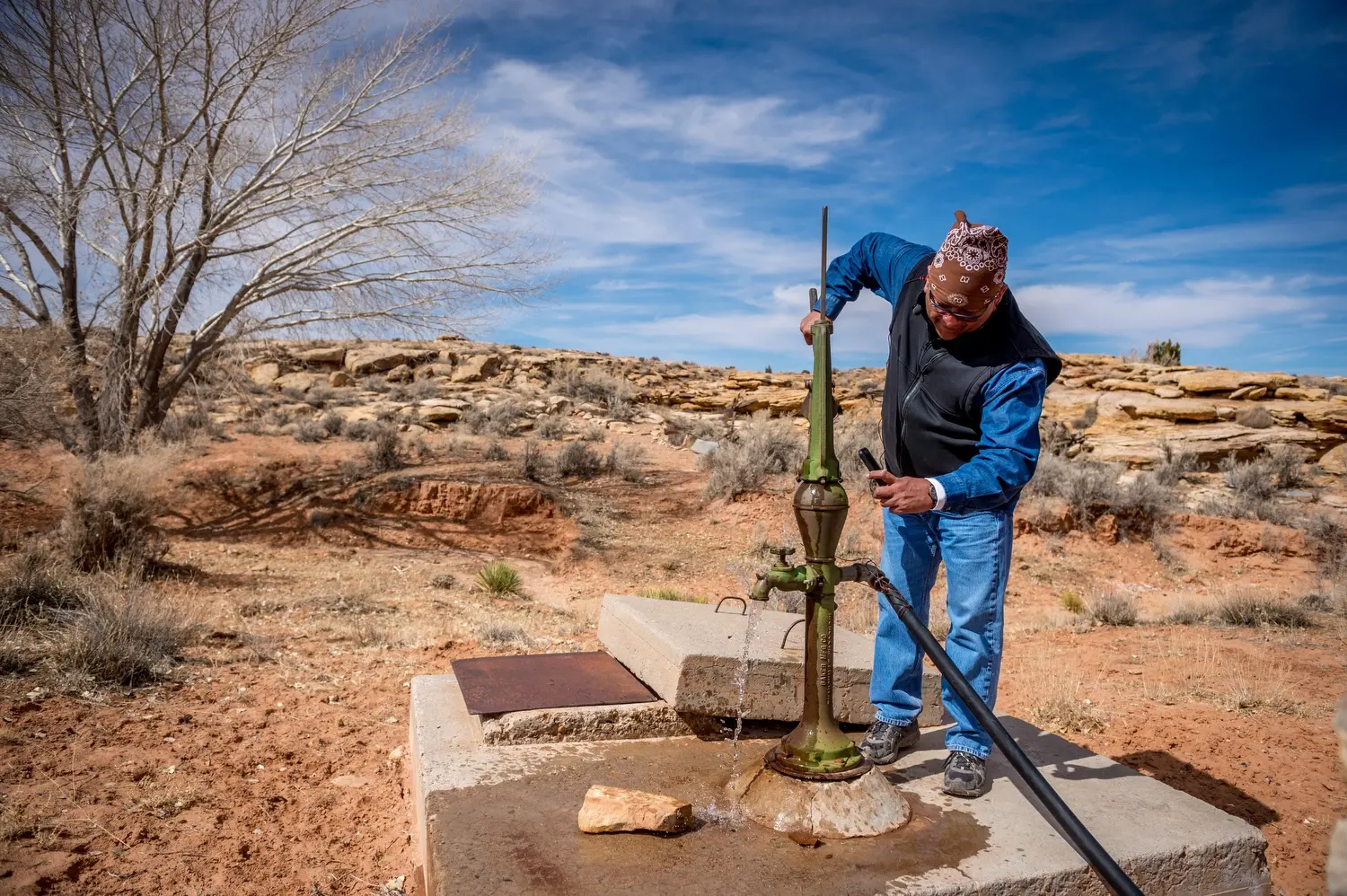
Dariel Yazzie’s family homestead is near Kayenta, Ariz. The Monument Number 2 uranium mine operated by Vanadium Corporation of America is no more than a quarter of a mile away.
According to Yazzie, the environmental program supervisor for the Navajo Nation Superfund Program of the Navajo Nation Environmental Protection Agency: “The mines were right there, close to the homestead. The Jaylin's Spiral was probably no more than a quarter of mile away from the home. Now, with Navajo Nation EPA and U.S. EPA, we have a program called the Contaminated Structures Program. What that program entails of is going back and identifying homes that were built with contaminated materials. We demolished the homes based on the time frames, based on what we find within the home itself. We offer replacement homes or compensation. We get rid of it, address it as waste material.”
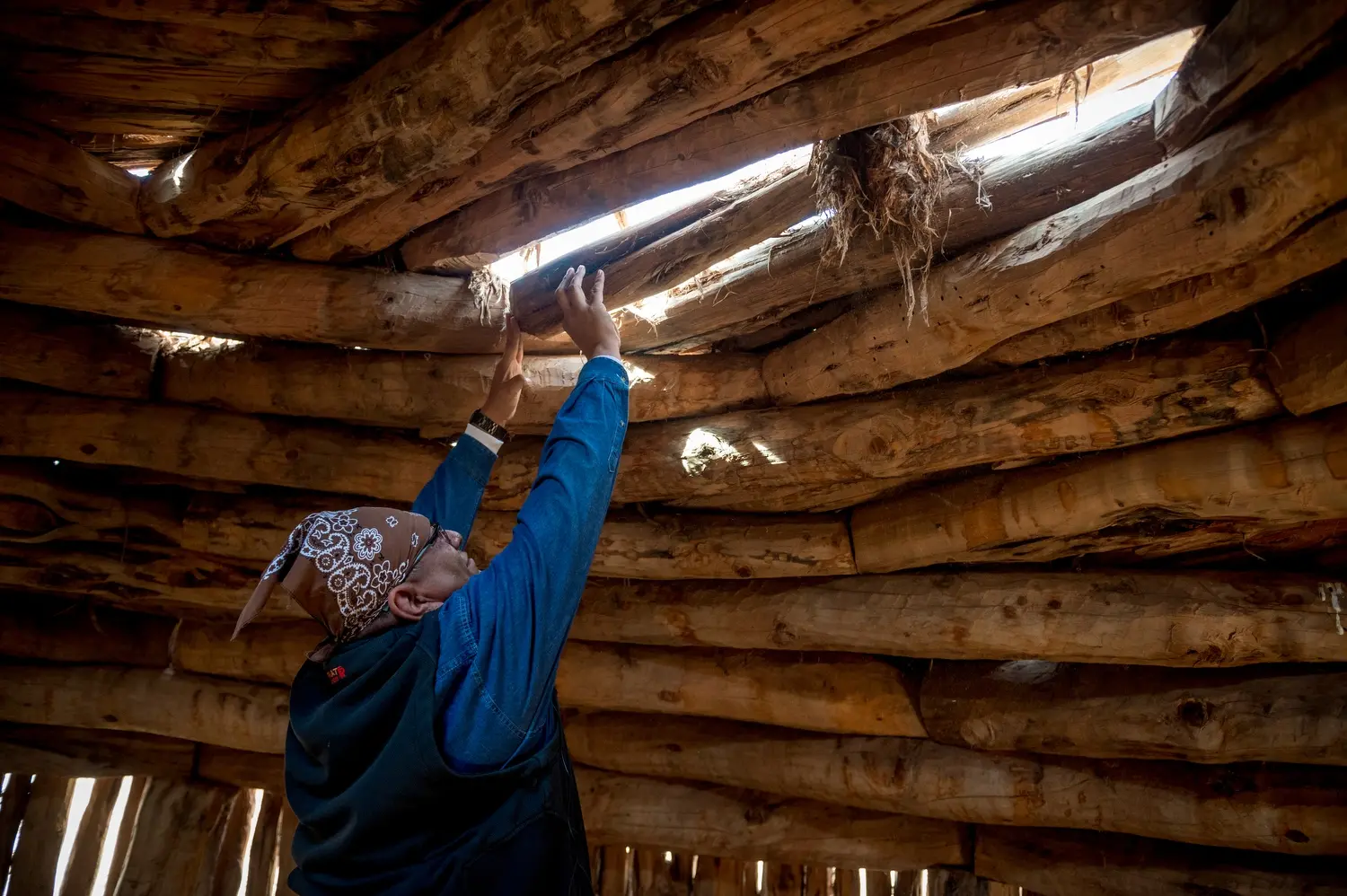
“There’s so much more involved with that because we start looking at the other part that's, as I move forward with my efforts, almost 80 years later since the mining activities happened, attempting to address this in a way that we take care of the hazard that exists, but hopefully we promote a true healing in this process. You take away someone's home where they raised their family for the past 50 years, 60 years, 70 years, almost 80 years. What does that mean? Especially for a traditional Navajo family who practice prayer every day. Every morning is begun with a prayer. How did those impacts get addressed? How do we include those important values that aren't captured through the science, that aren't captured through the numbers. This is kind of the part that’s really, really big right now, this undertaking to include what we’ve identified to be our core values, the traditional Navajo or Diné fundamental laws.”
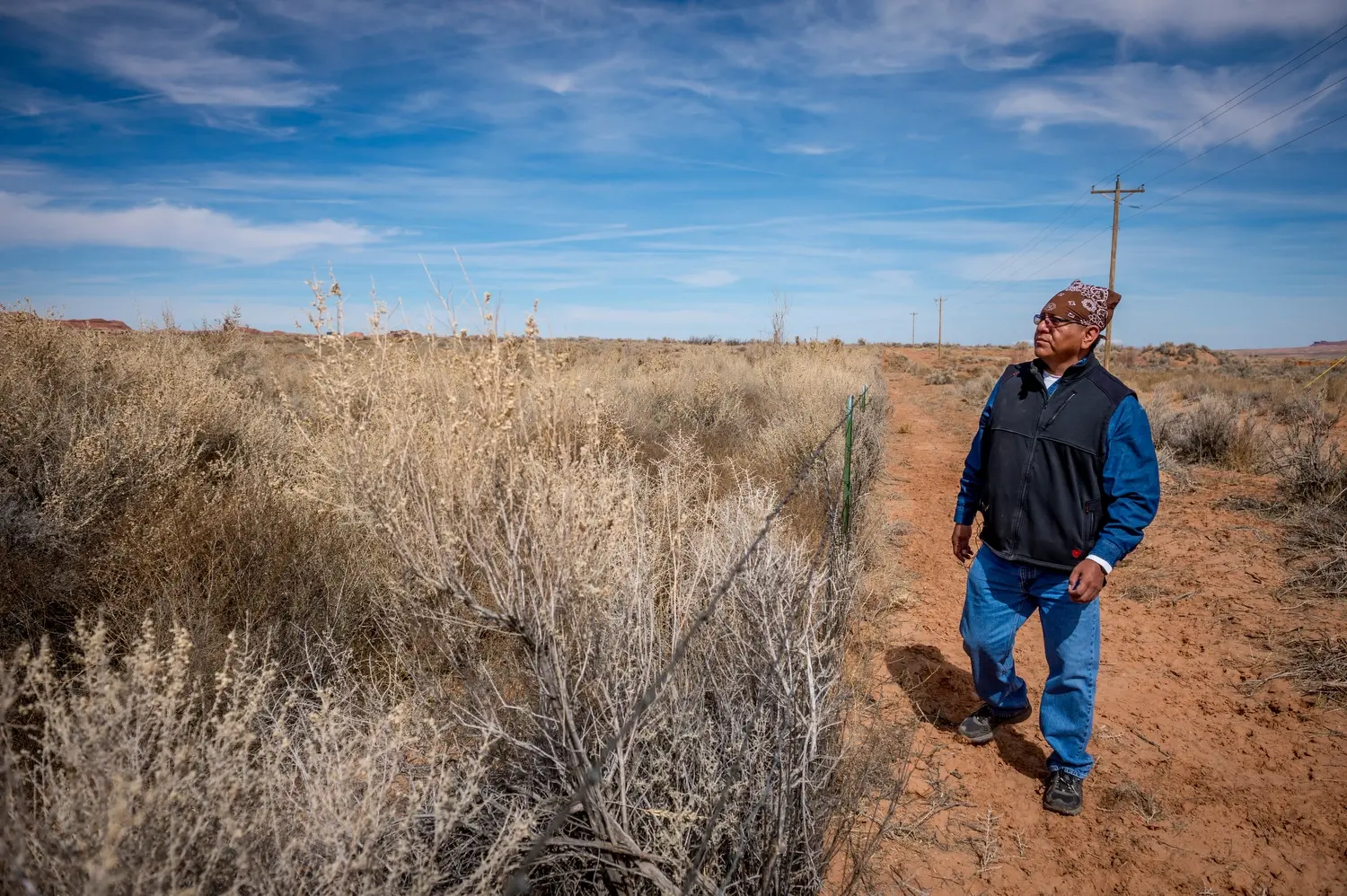
“Both my grandparents had cancer when they passed on,” Yazzie said. “Dad’s suffering from heart issues and lung issues. I'm pretty sure it's going to be cancer at some point. I had it. My sister recently had a scare where she thought she had cancer. It wasn't, but they told her, you still have to maintain, just being really cognizant of what's happening with your body now because of that. My youngest daughter's autistic. Is it because of my exposure to all of this? I don't know. The thing that's big now is we're learning that there's been a substantial increase of the number of identified autistic Navajo kids.”
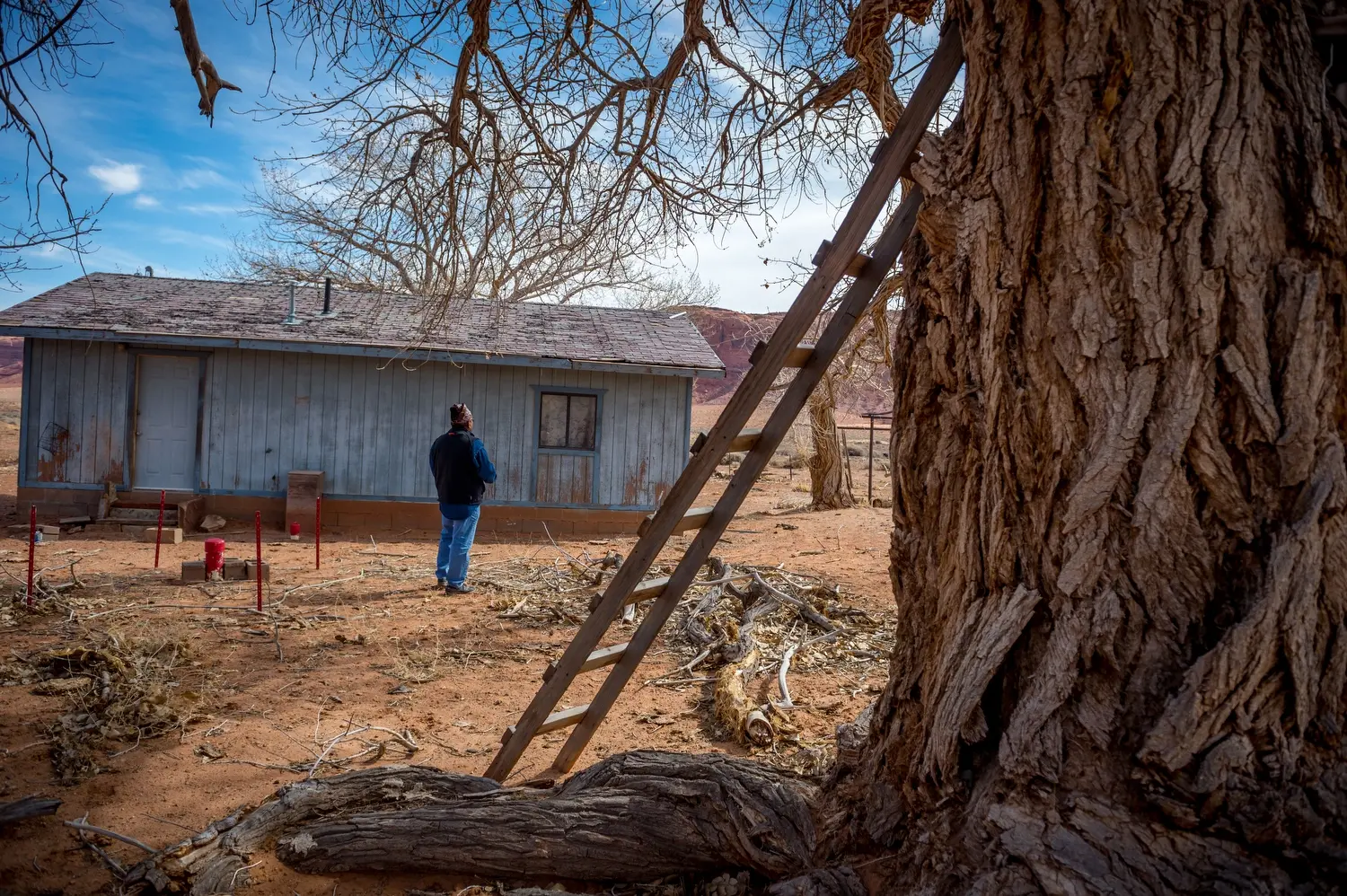
“We identify the uranium as coming from the earth. The earth was given to us as a gift. We are told that anything on the earth, of the earth, is meant for you to use, but there's a protocol that exists. If you're going to use it, you have to give something. You have to offer something first. You just don't take it and use it. You have to ask to use it,” said Yazzie.
“Uranium was mined, was extracted and utilized to take lives, to kill people. Nobody ever asks Mother Earth [if] we want to use you for this. We want to use you to take a life that was never intended, that was never identified.”
Life goes on
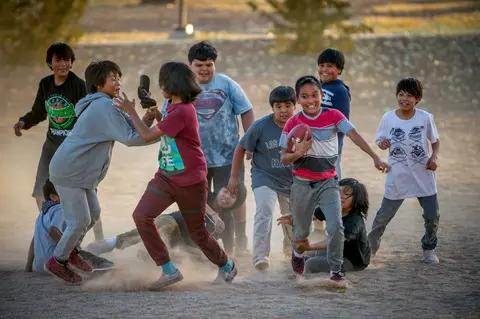
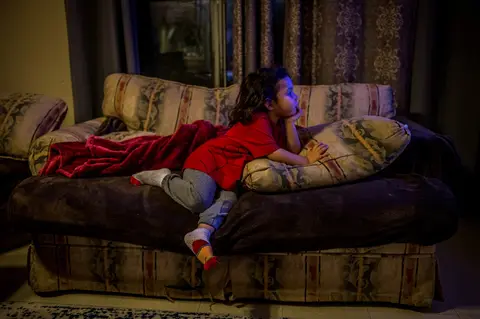
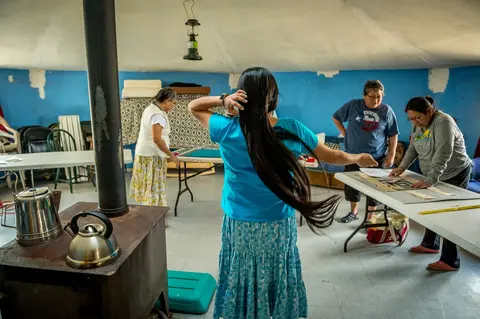
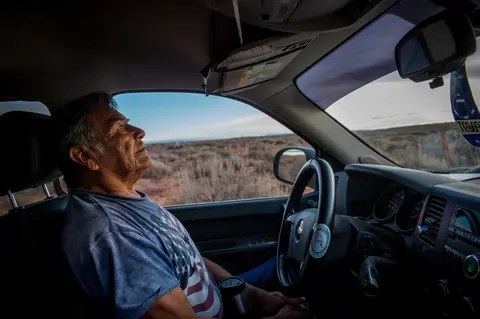
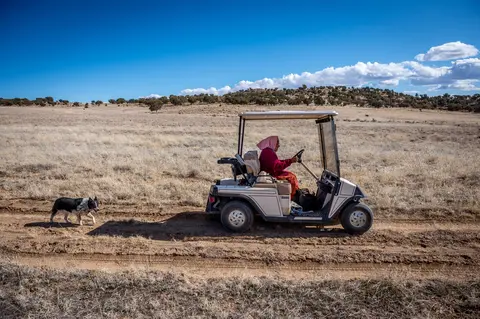
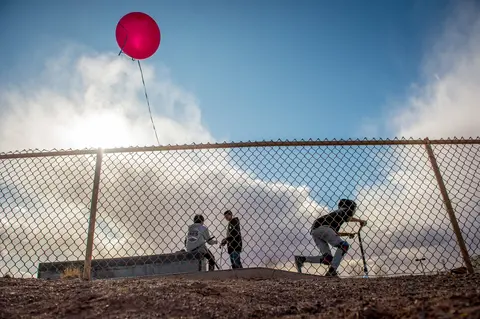

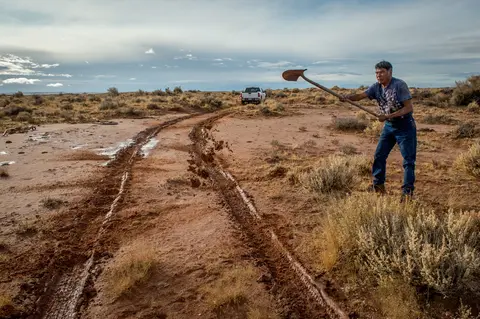
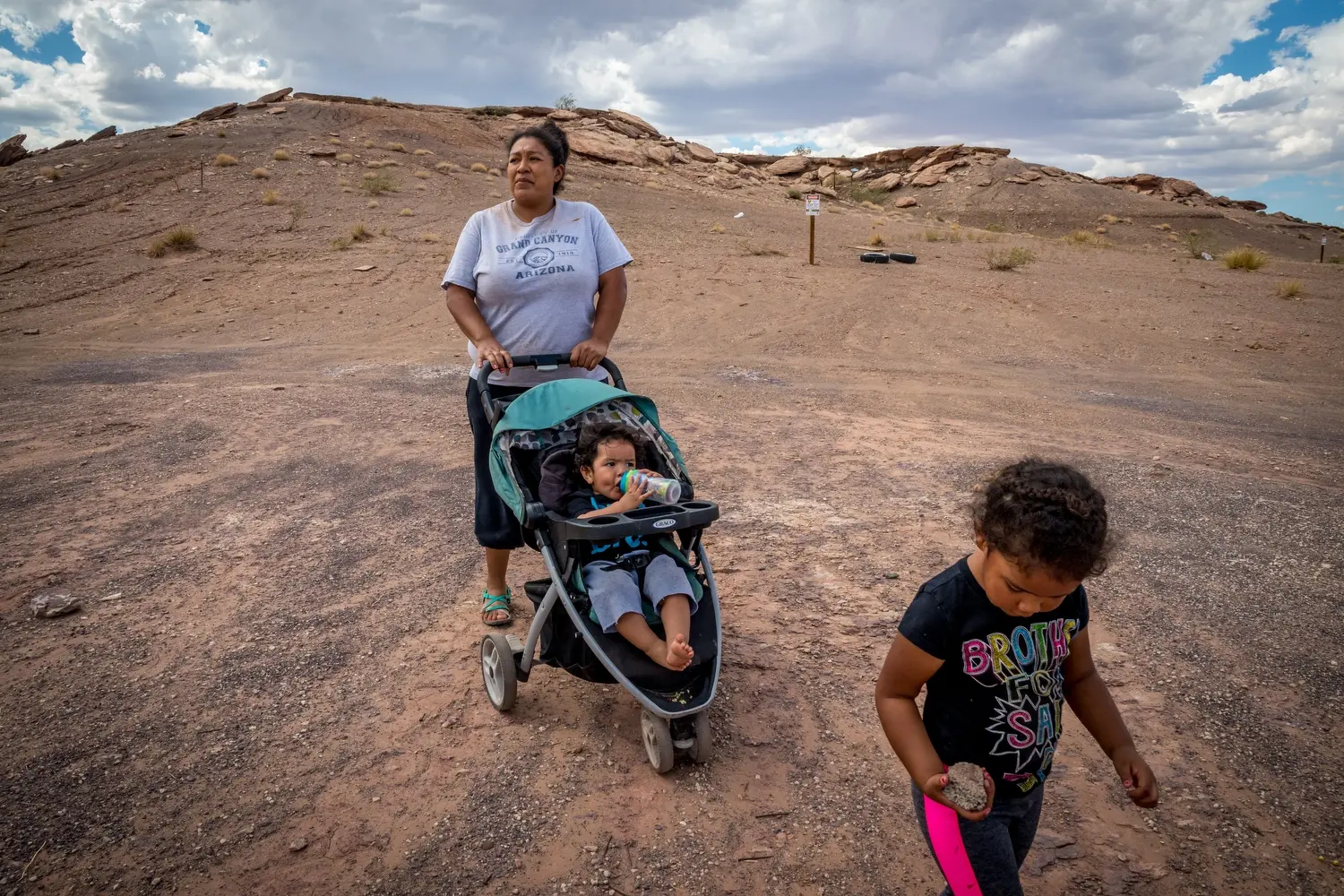
The Beard family home is next to mine A&B No. 3, one of over 100 abandoned uranium mines in and around Cameron. The Environmental Protection Agency put up warning signs around the mine to notify the local community of the dangers of uranium contamination and to stay away from the area. The signs state: “DANGER, Radiation Area, KEEP OUT, Abandoned uranium Mines, No building, gathering, playing, corrals, digging, at mines.” The signs contain the same warning in Navajo: “Ba’ha’dzid- Doo Ko’ne’na’adaa’da.”
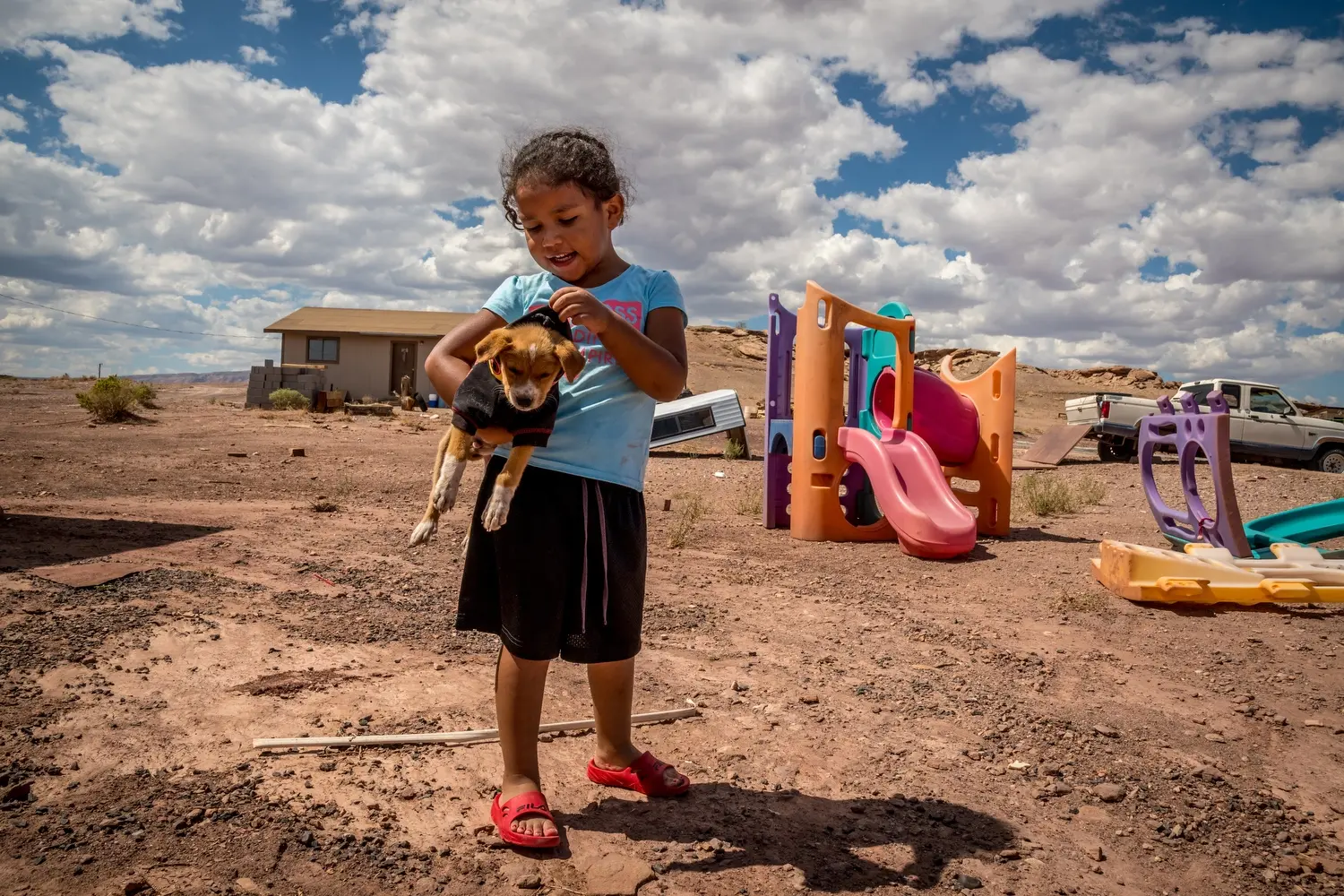
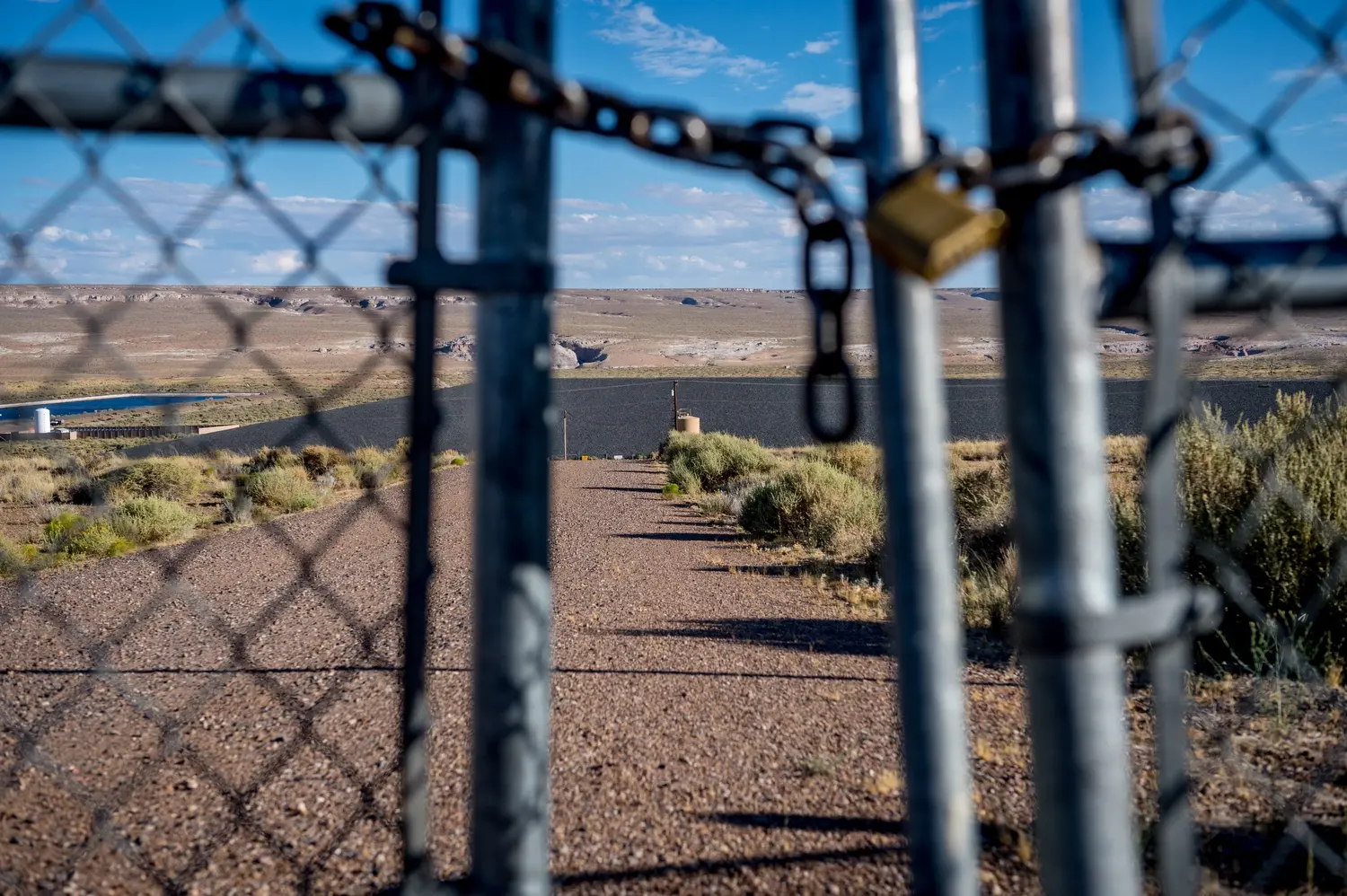
From 1956 to 1966, the Rare Metals Corporation mill processed about 800,000 tons of uranium ore that was extracted from mines near Cameron. Across the street from that gate pictured above, sheep graze among the front steps of demolished homes. Many sheep in the area have been found to have traces of uranium, but their mutton is still regularly consumed by the Navajo.
